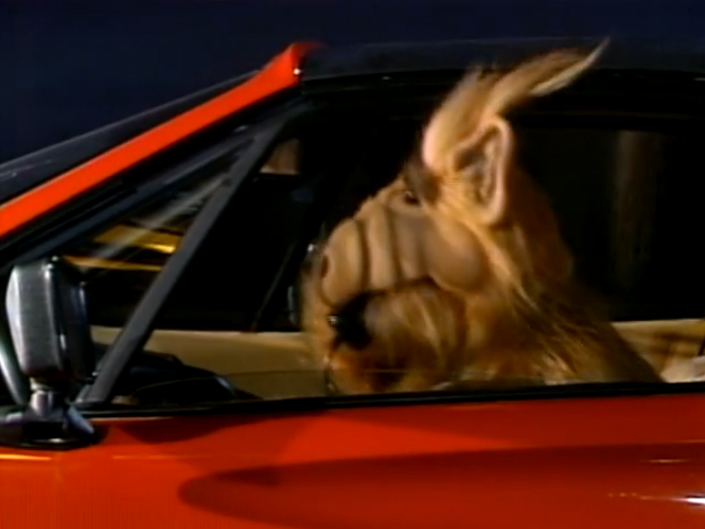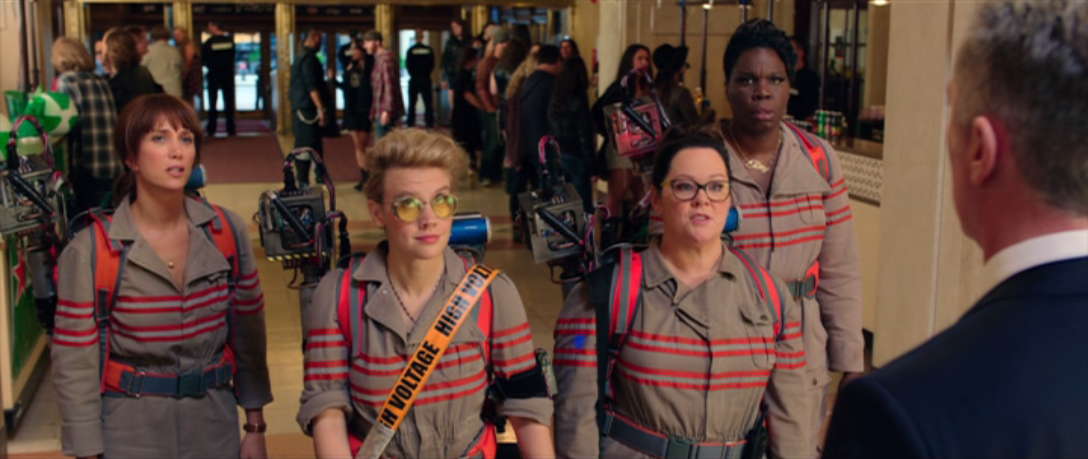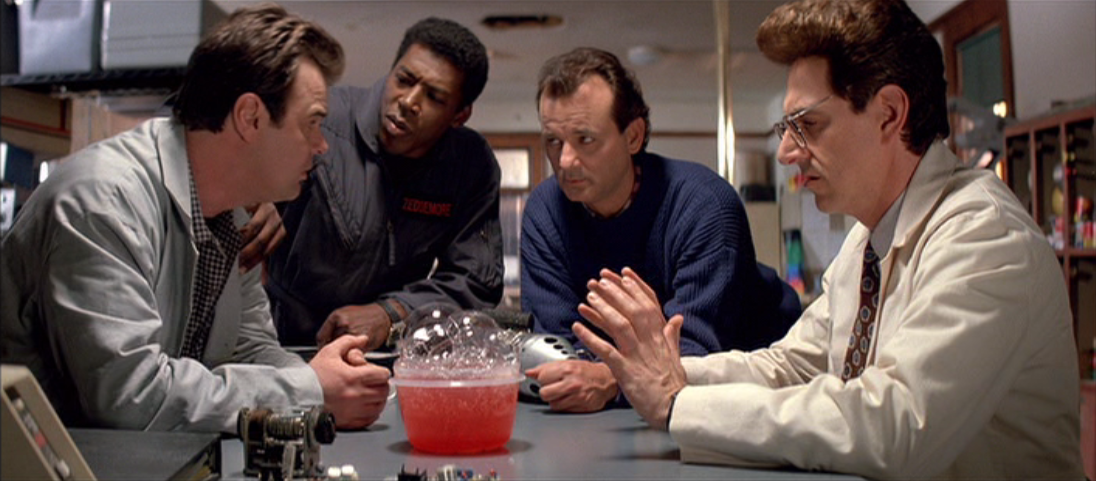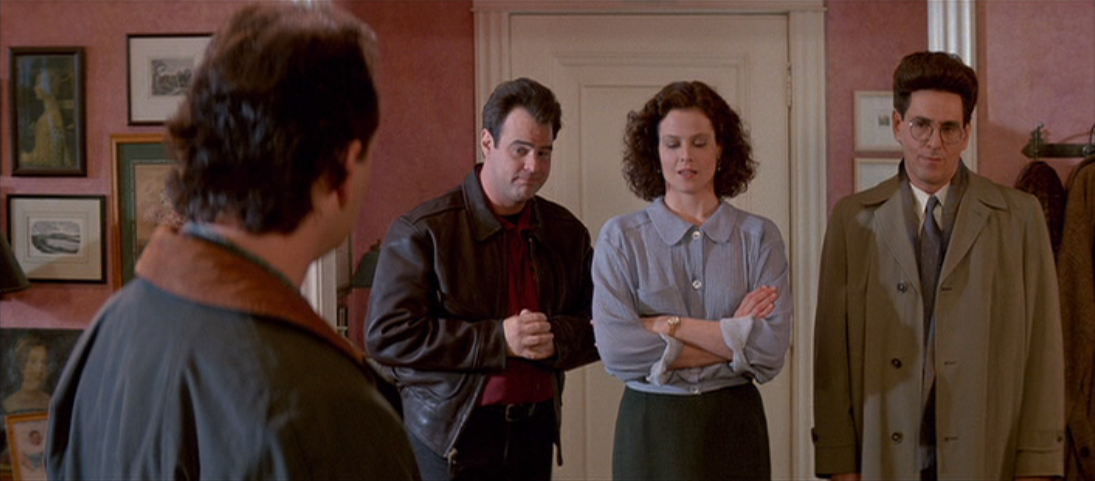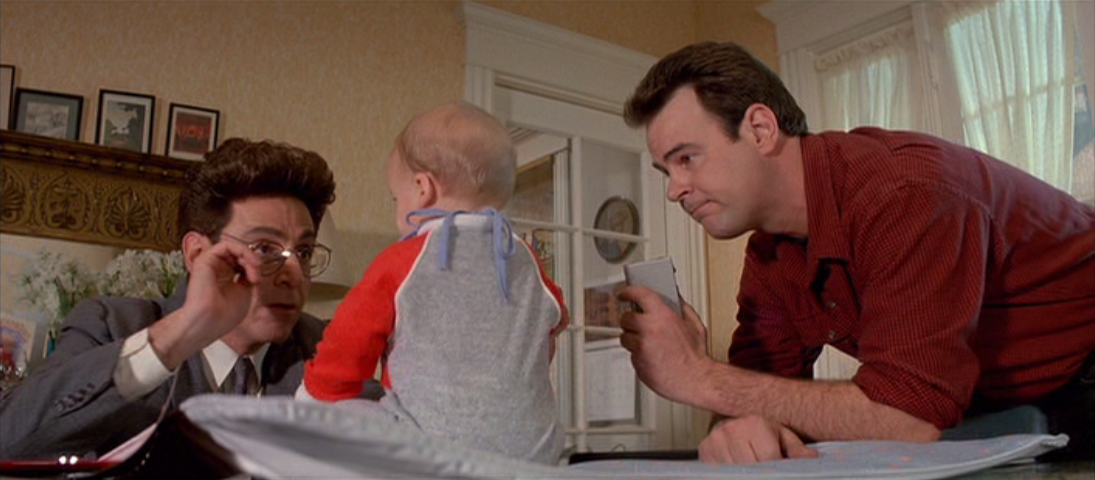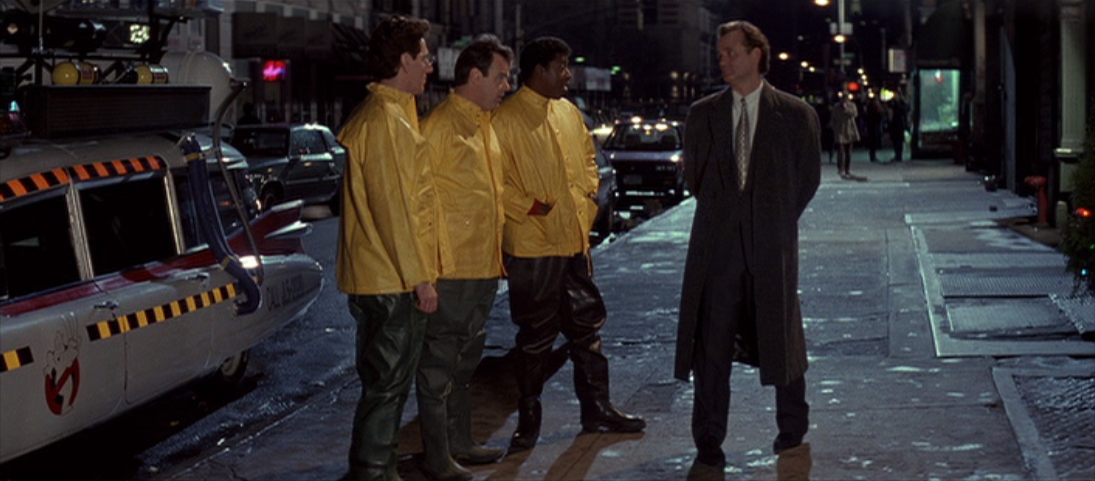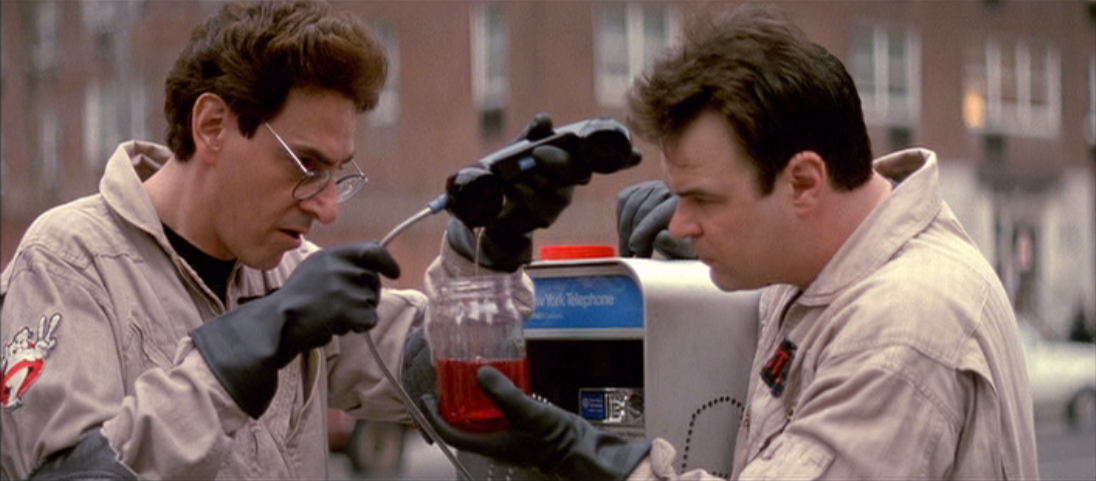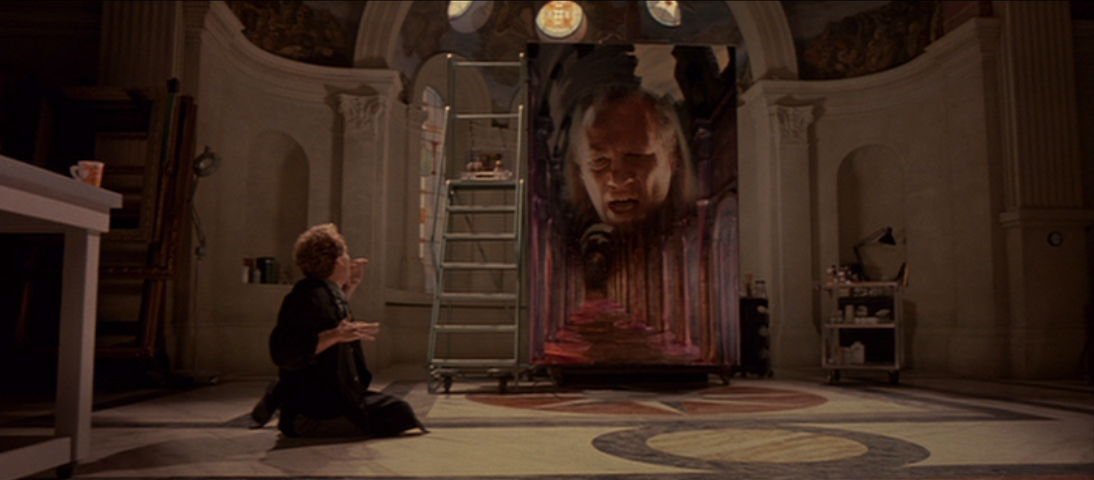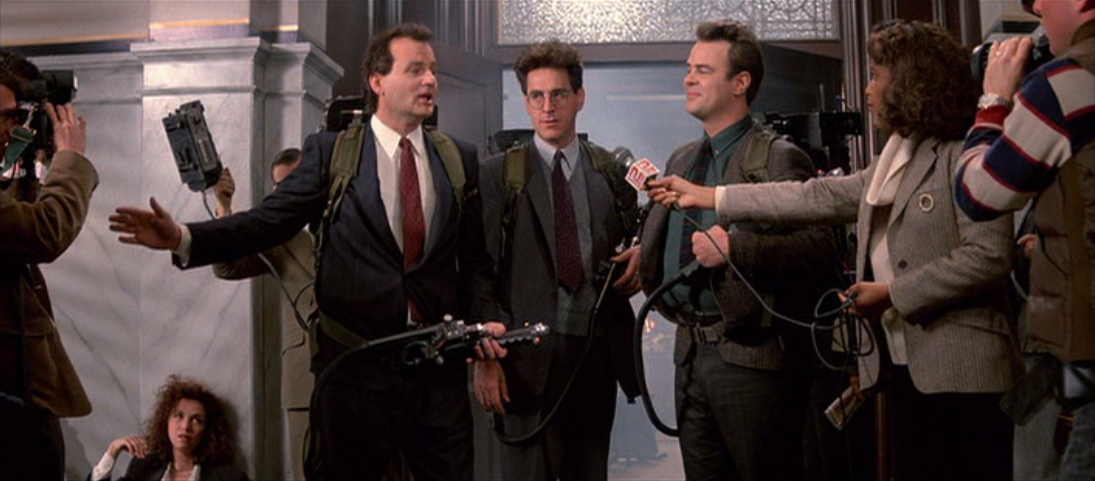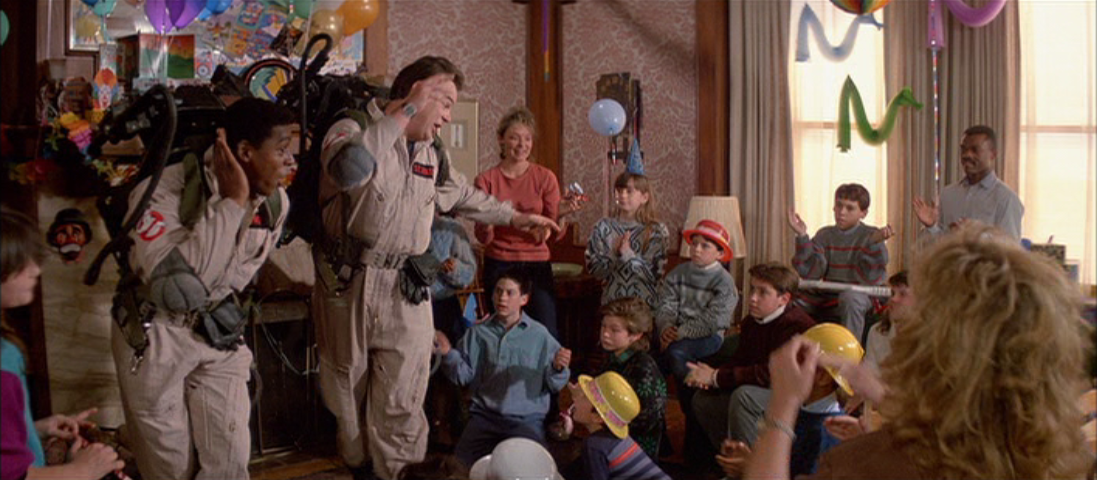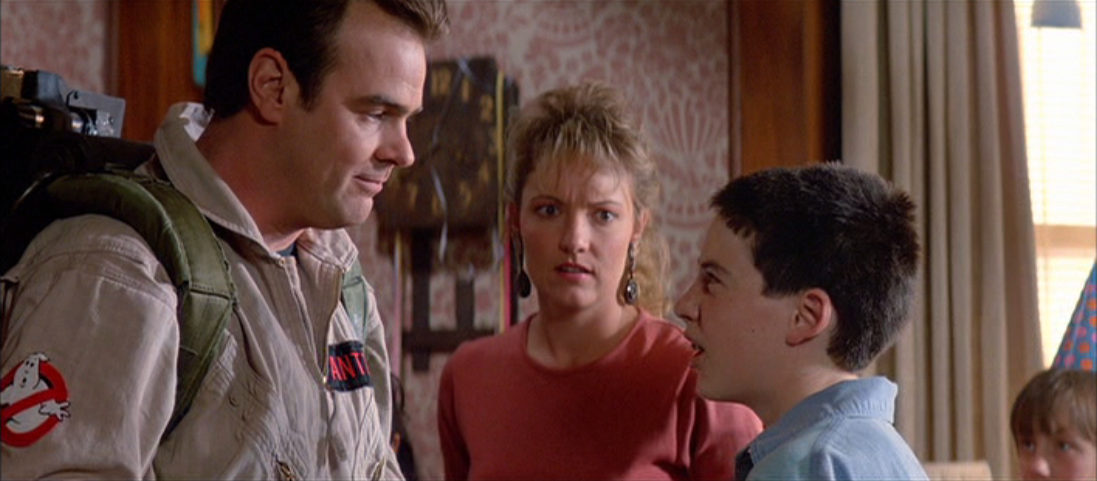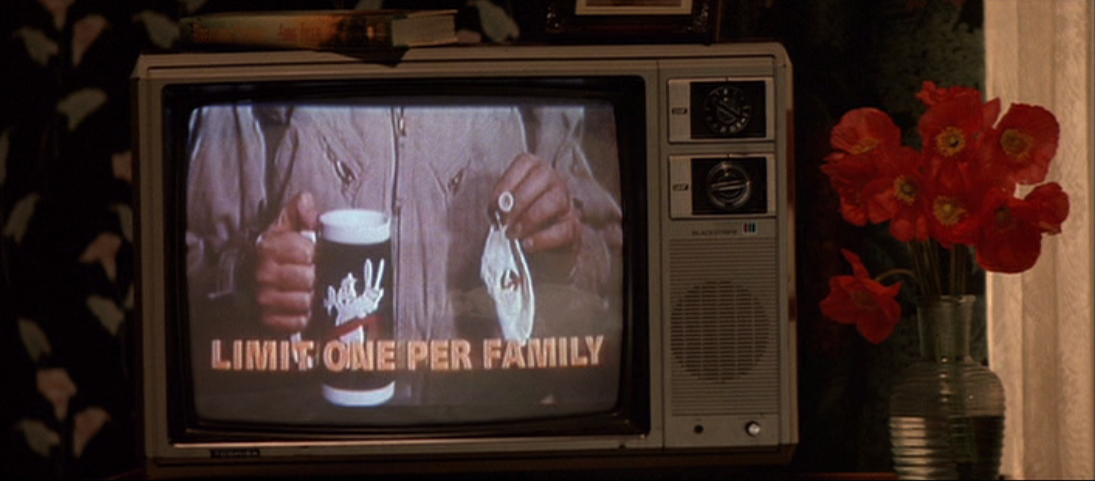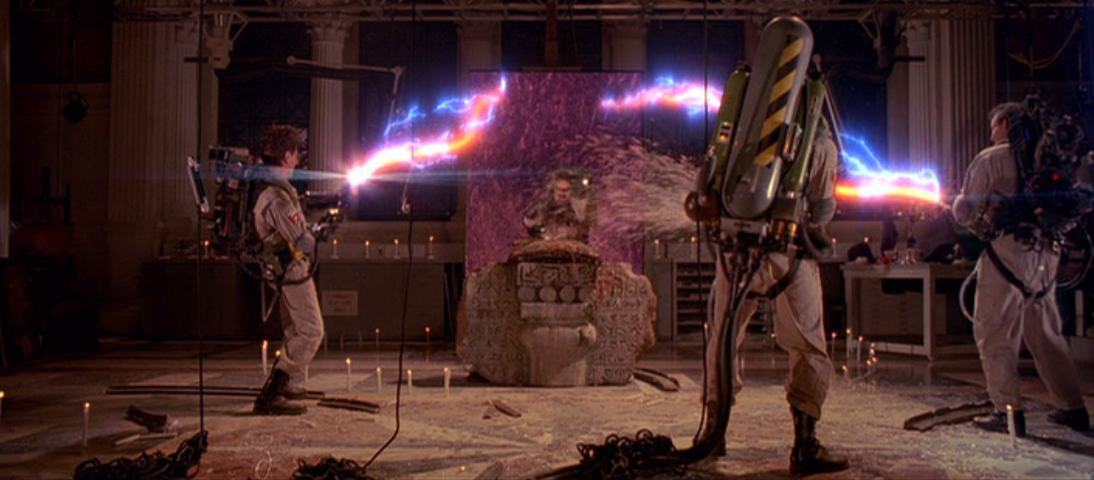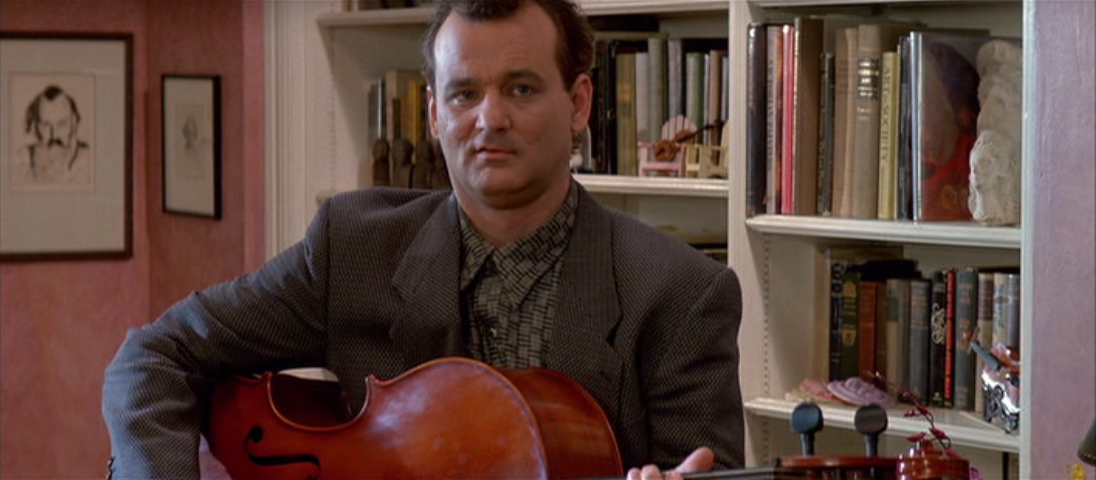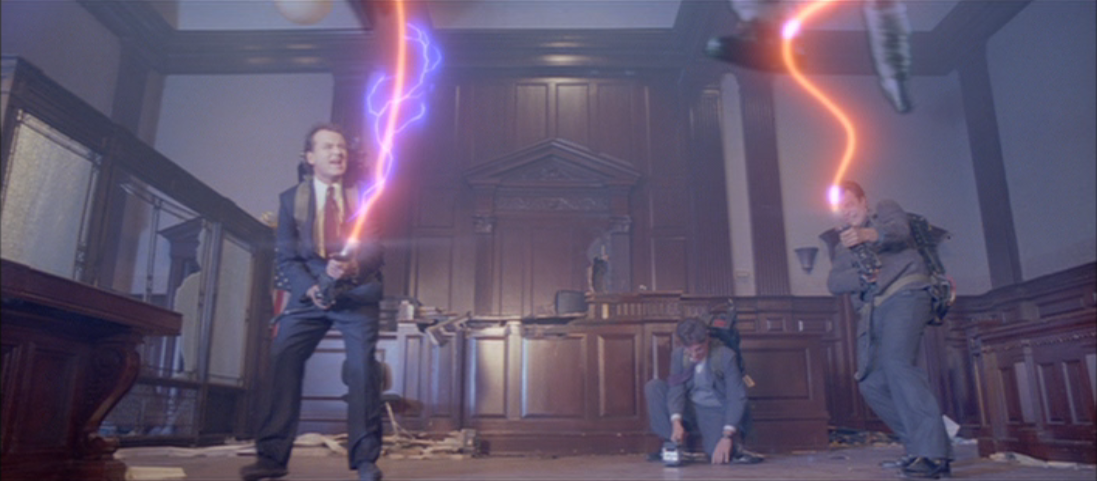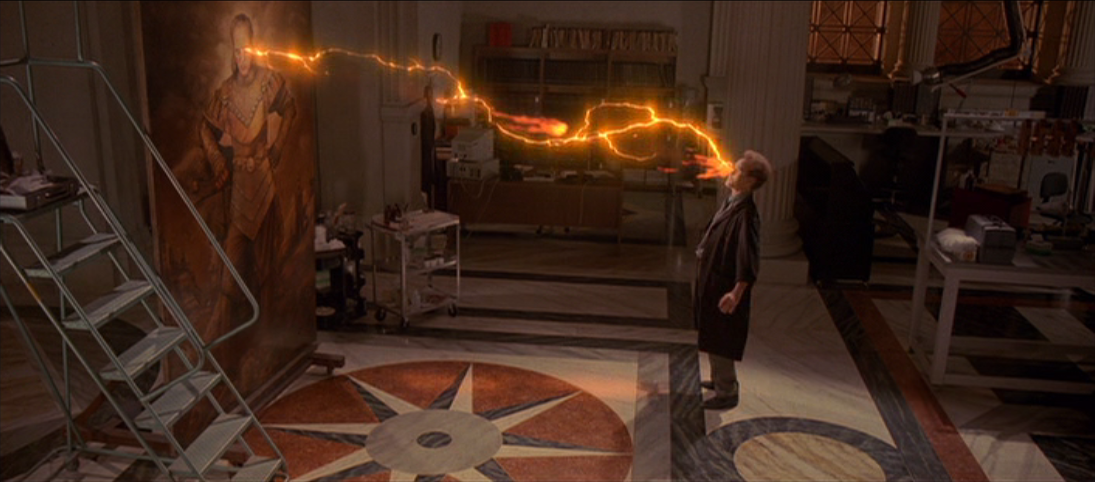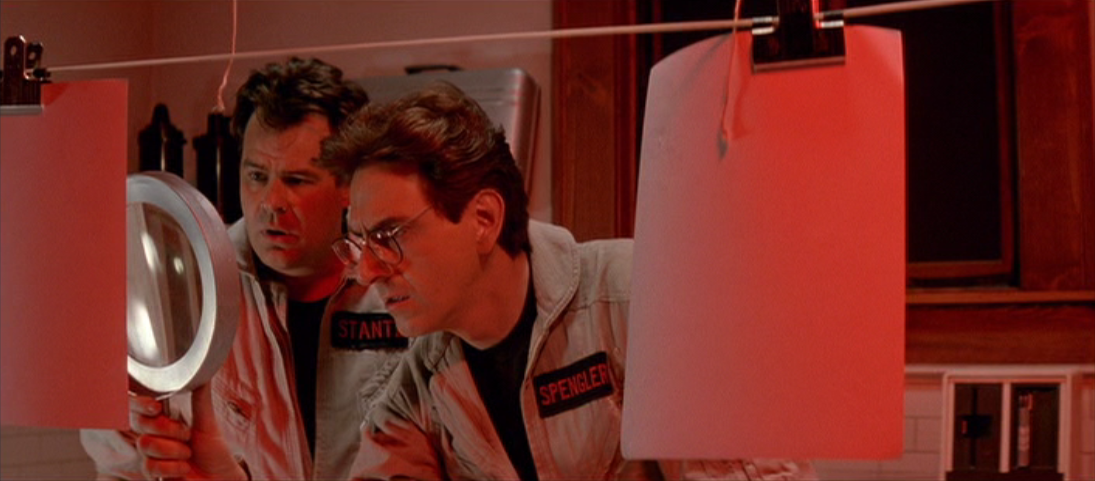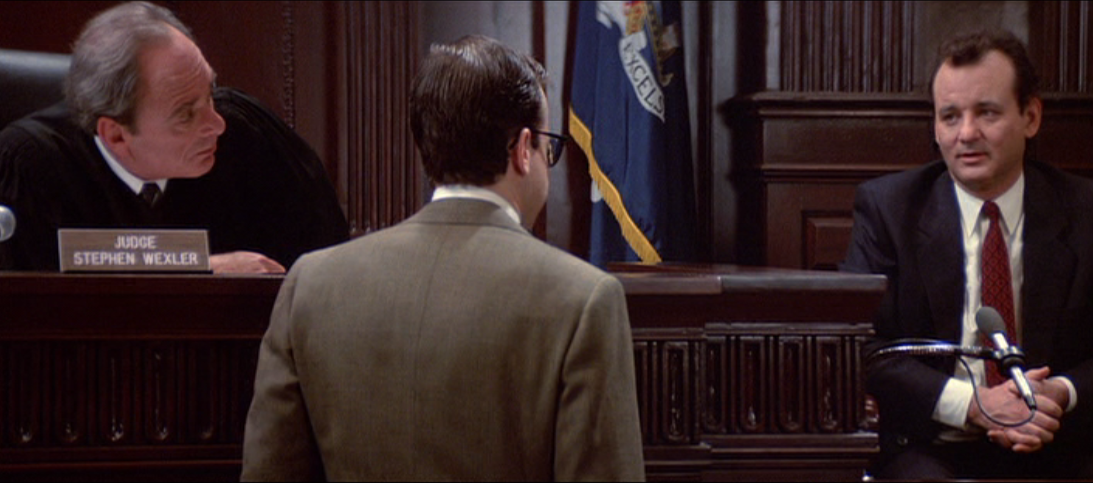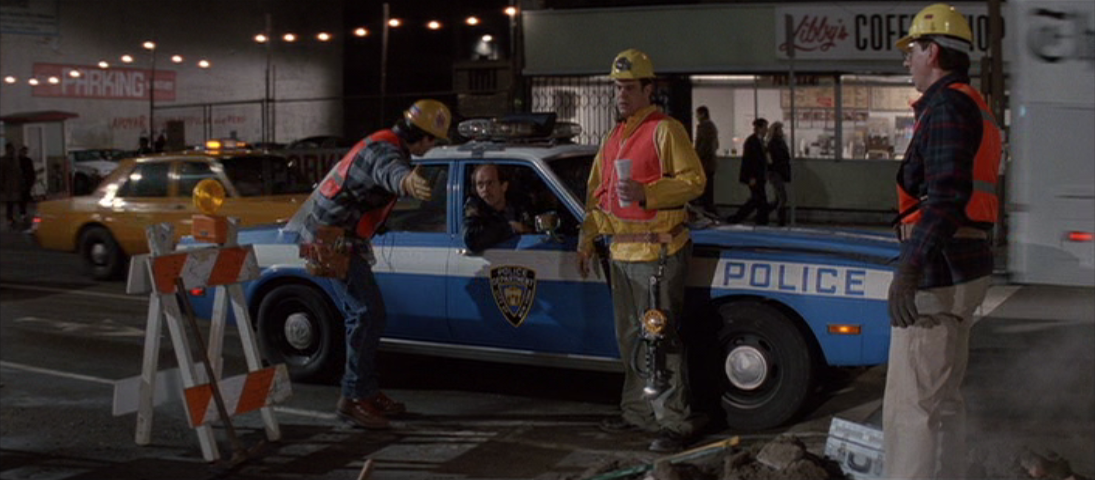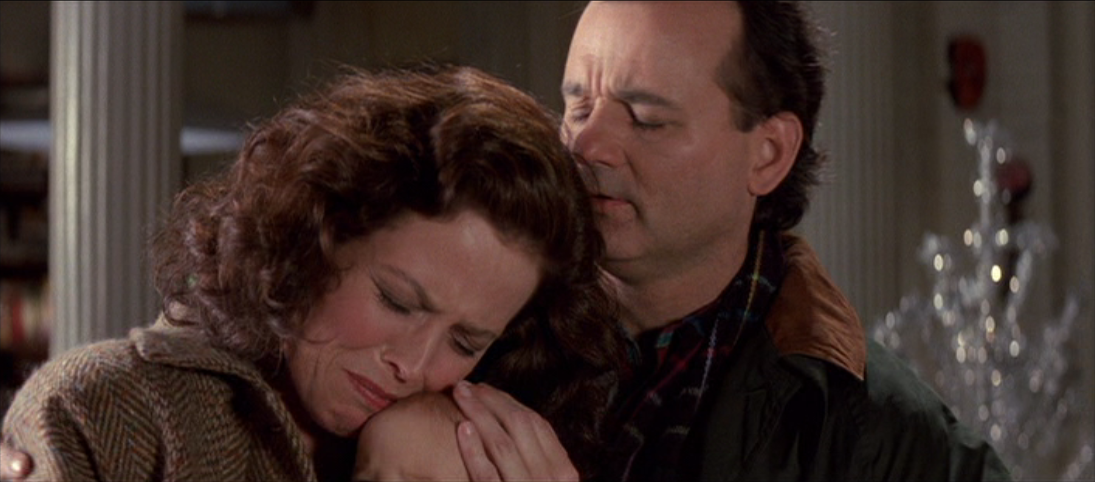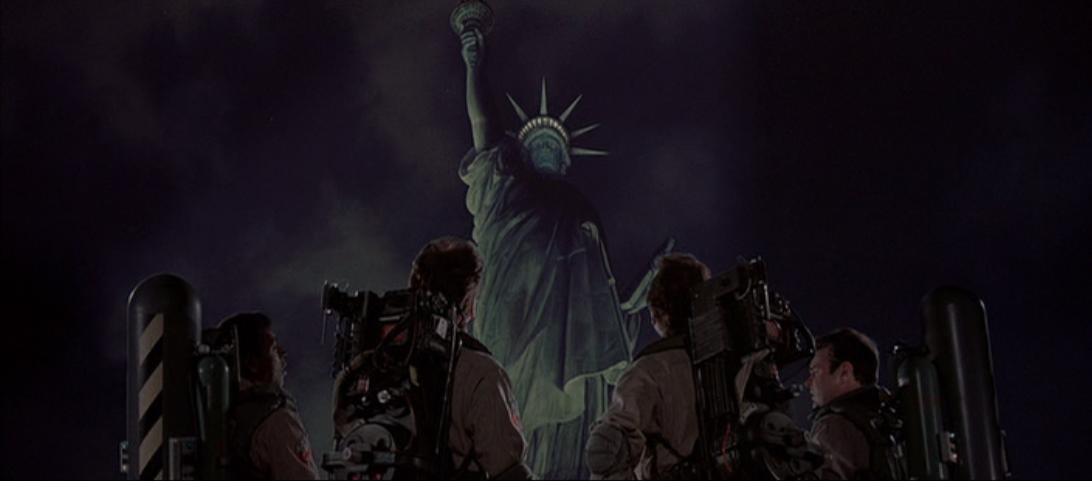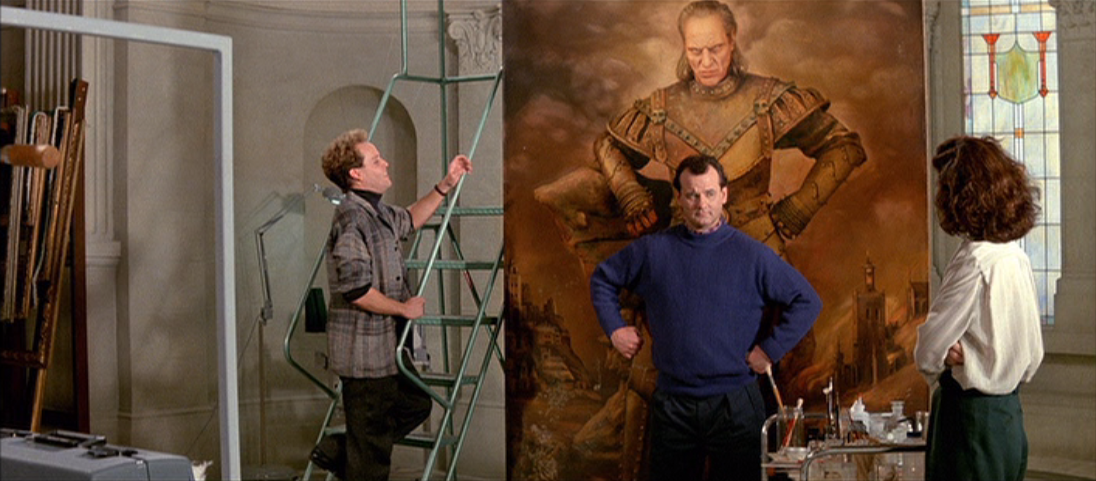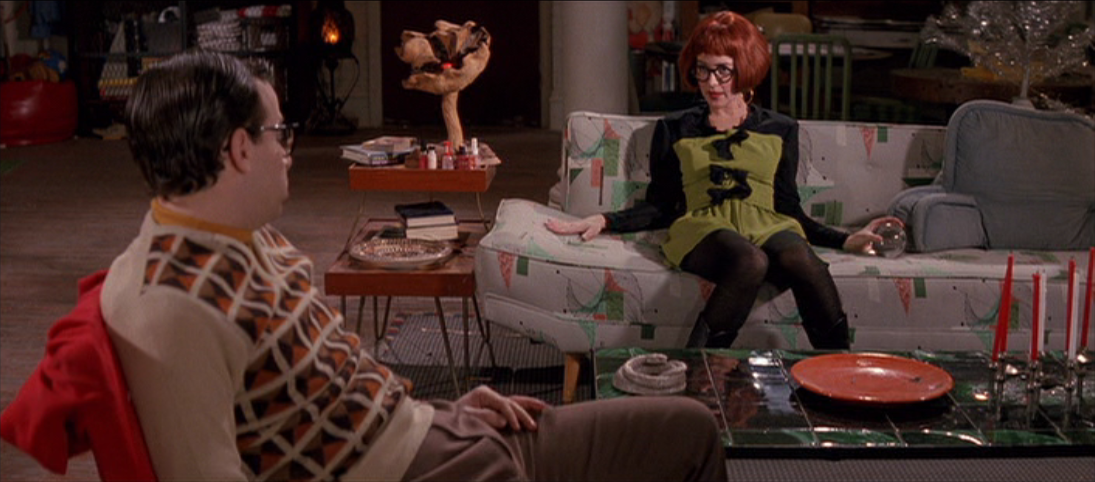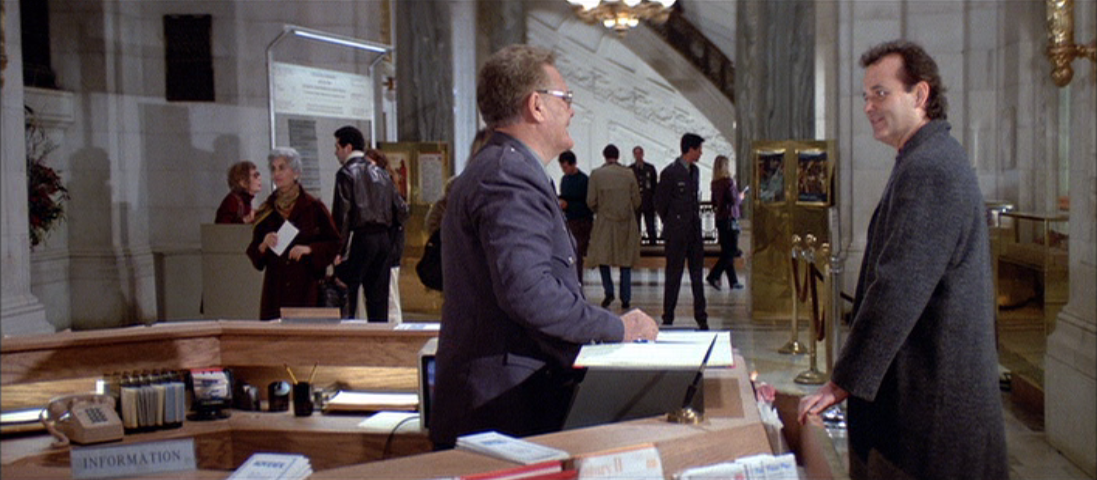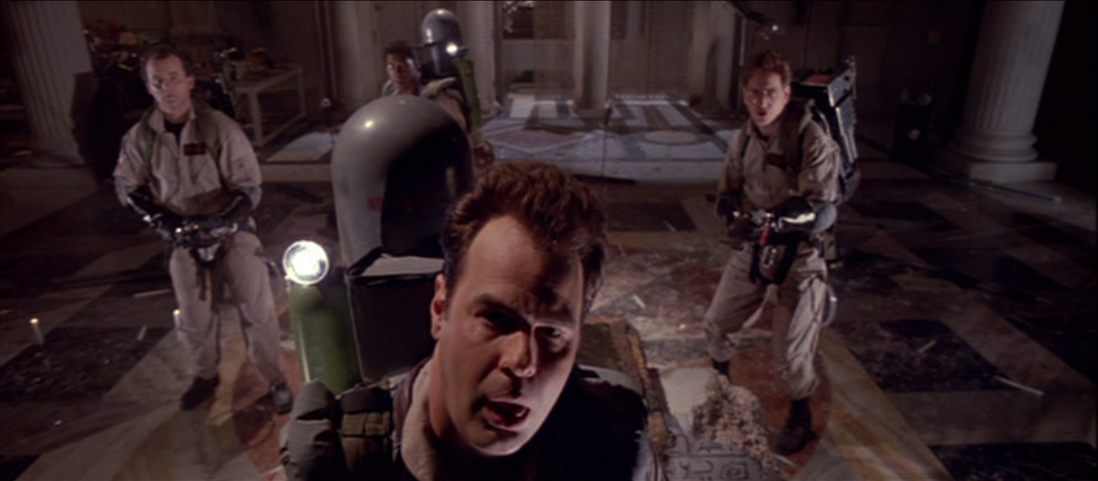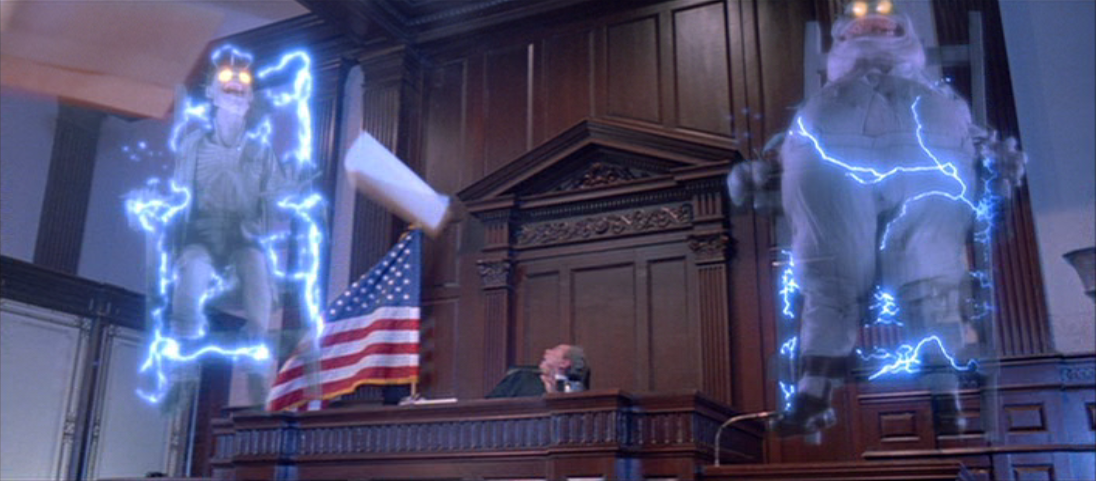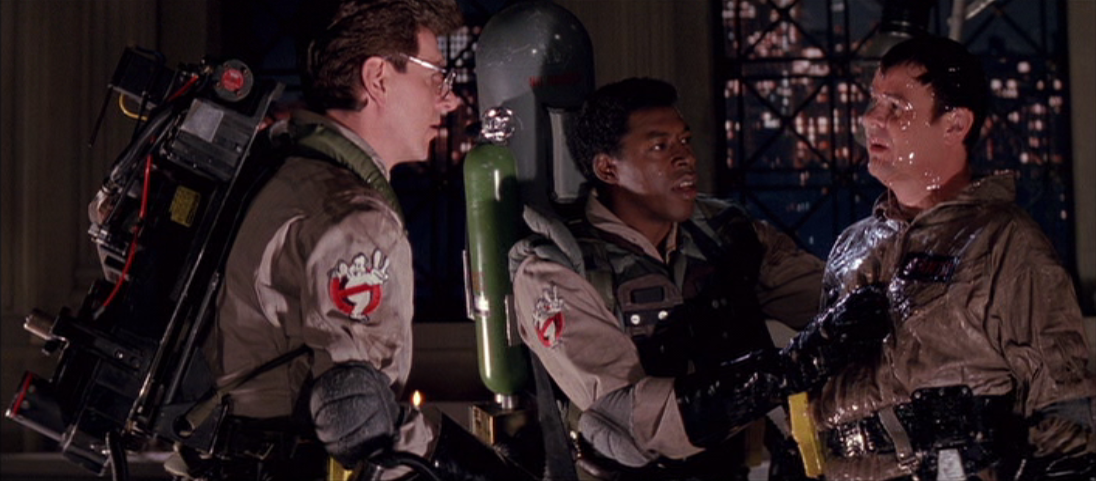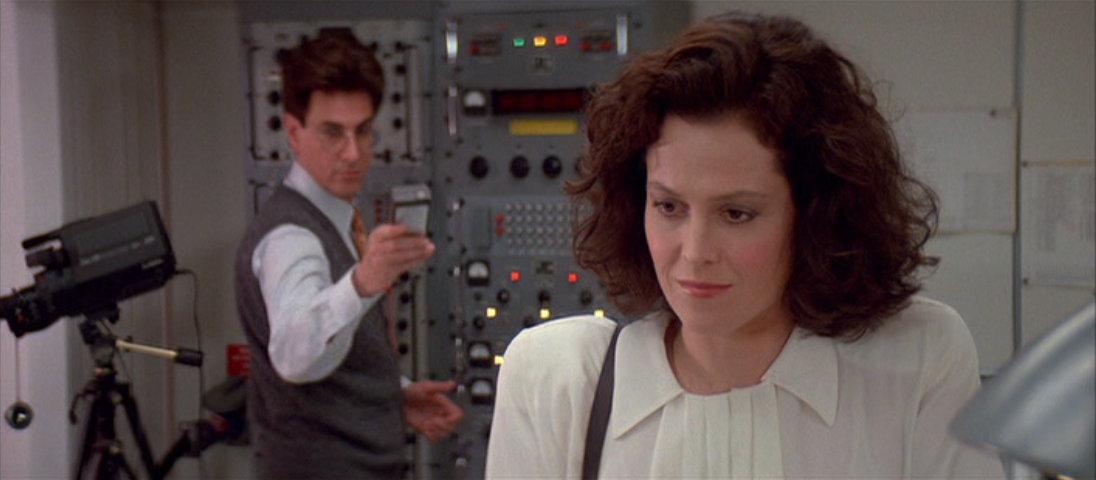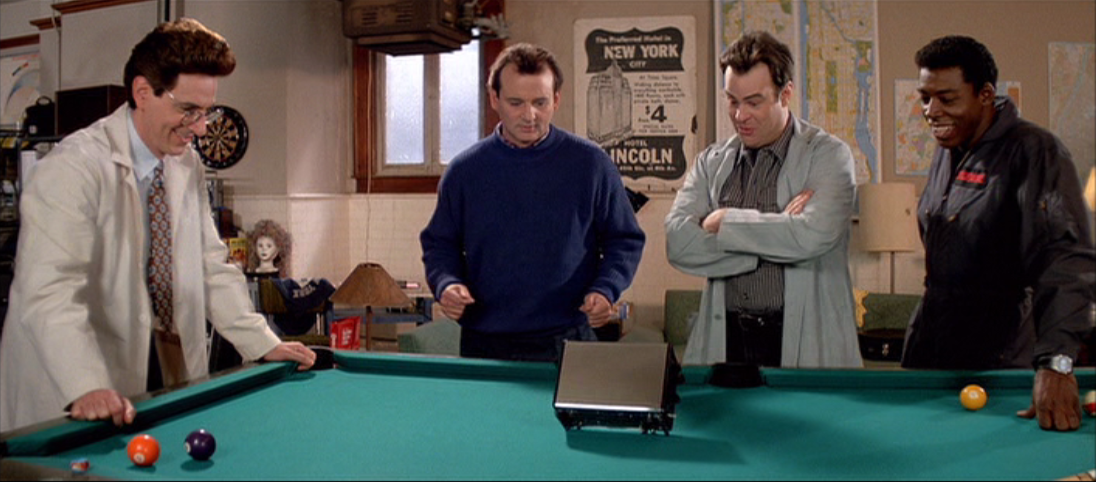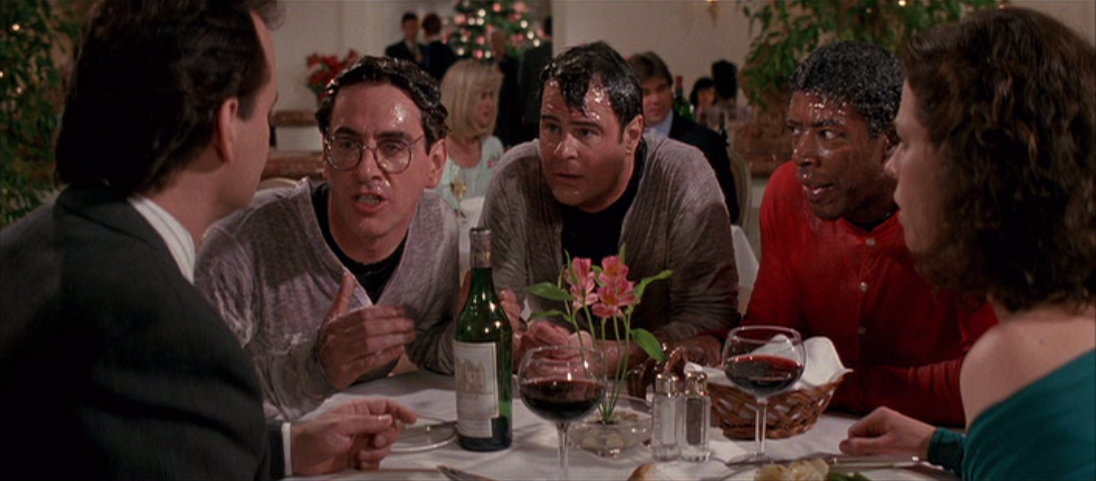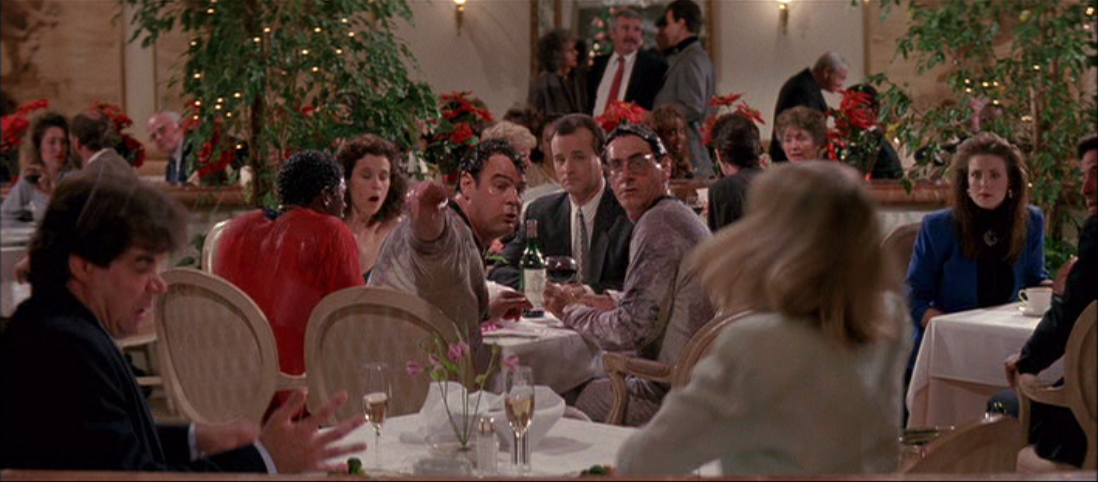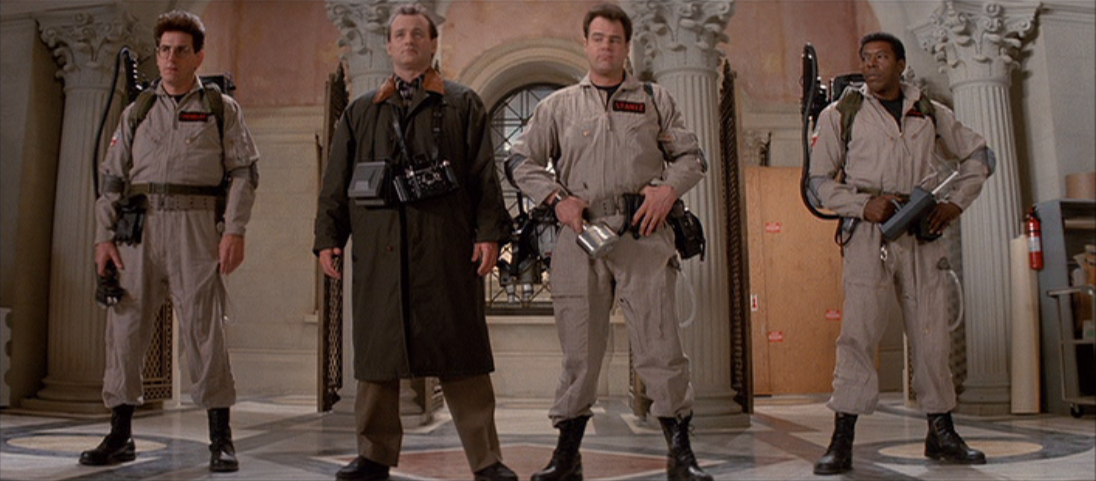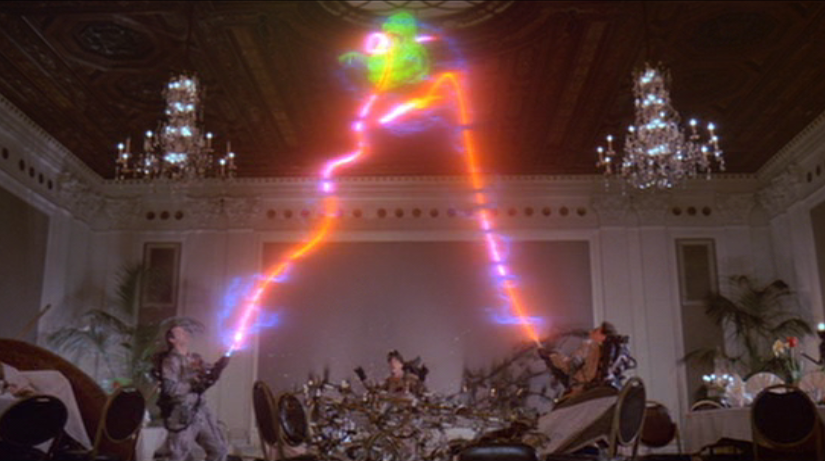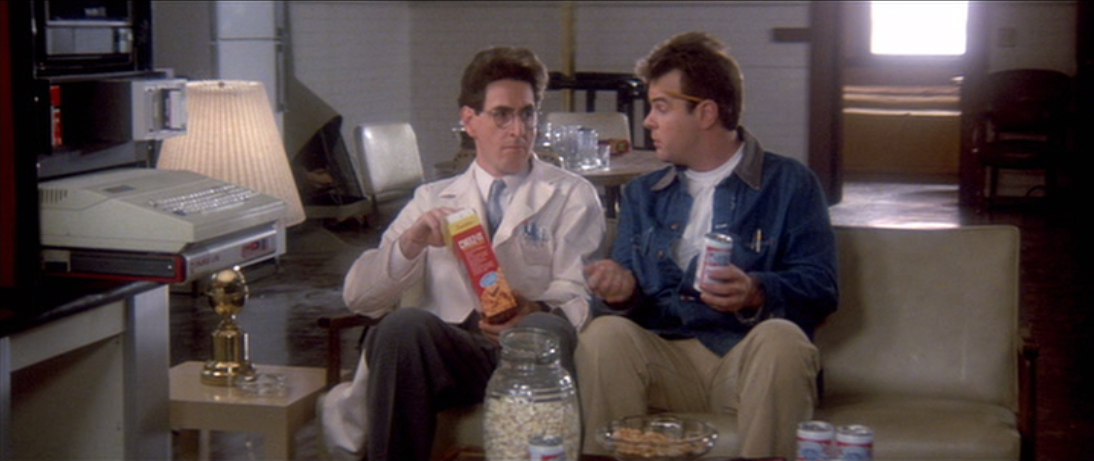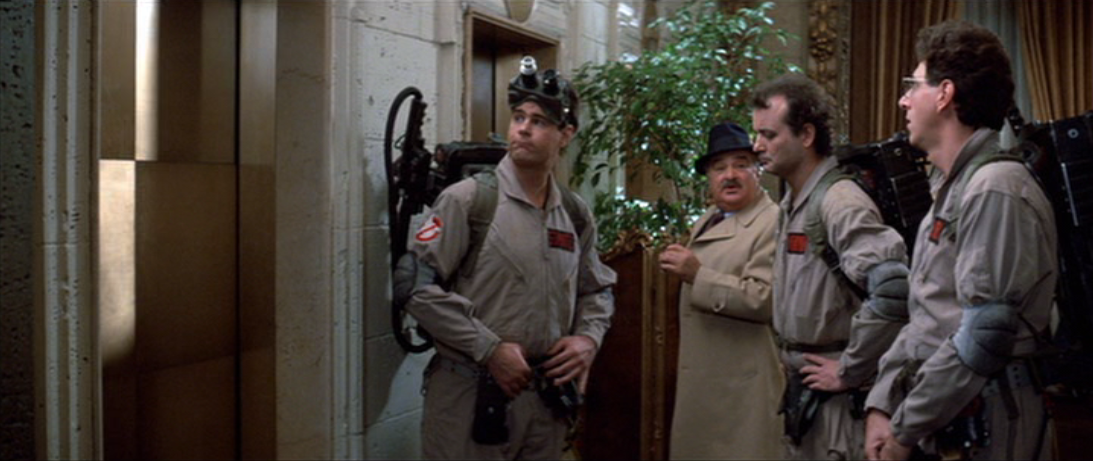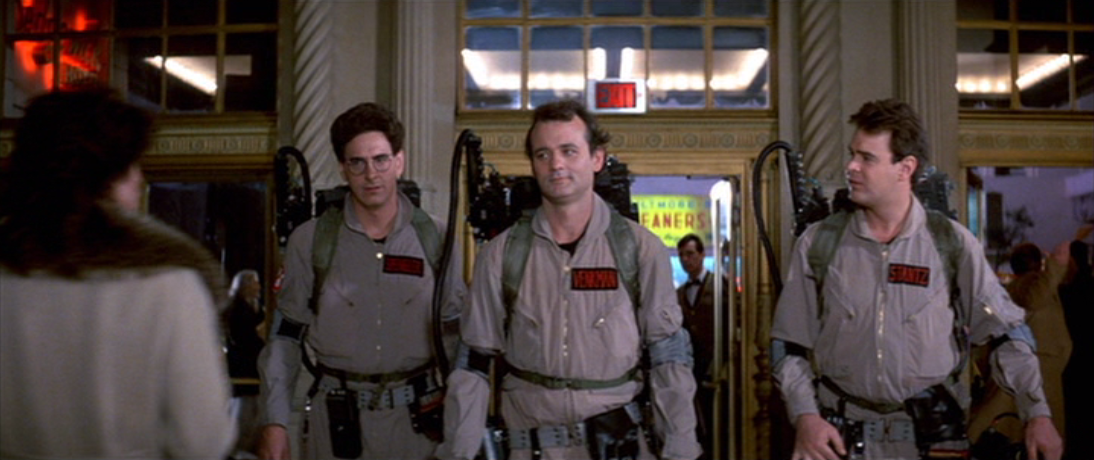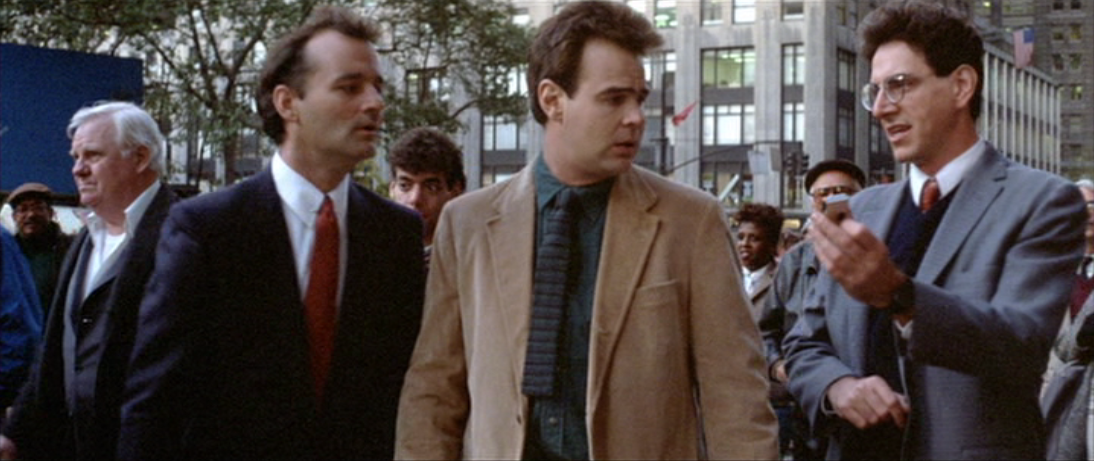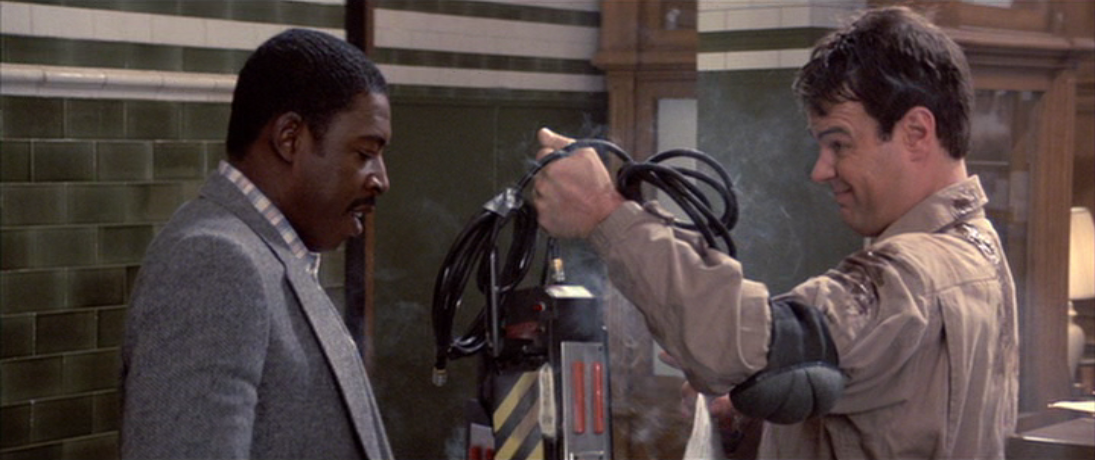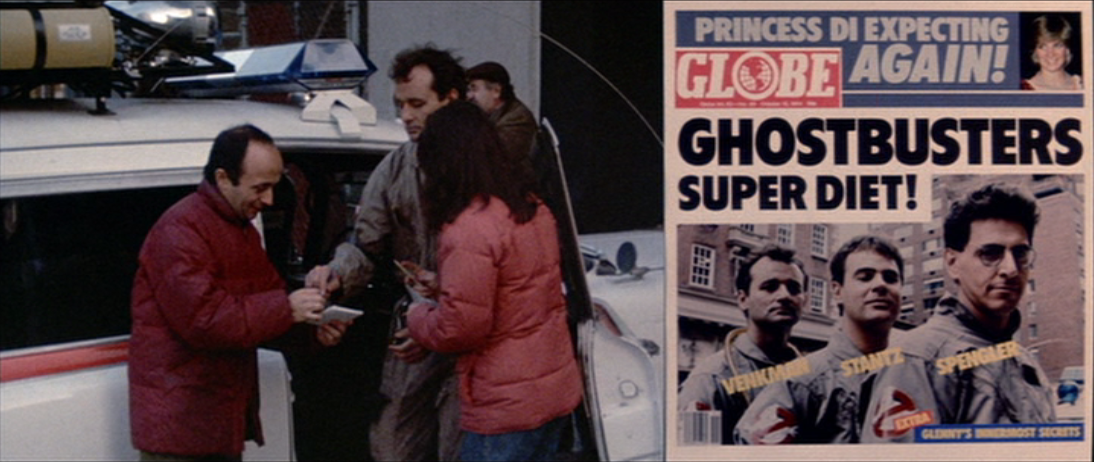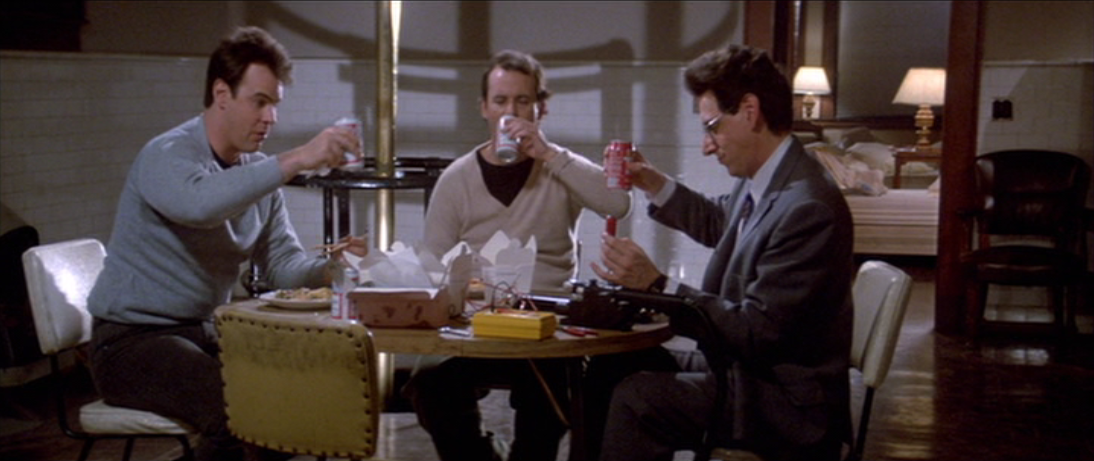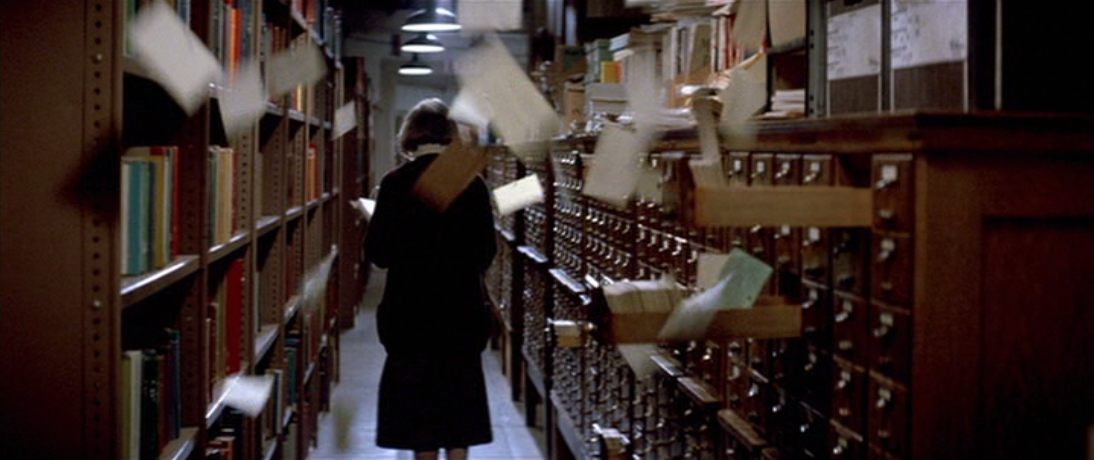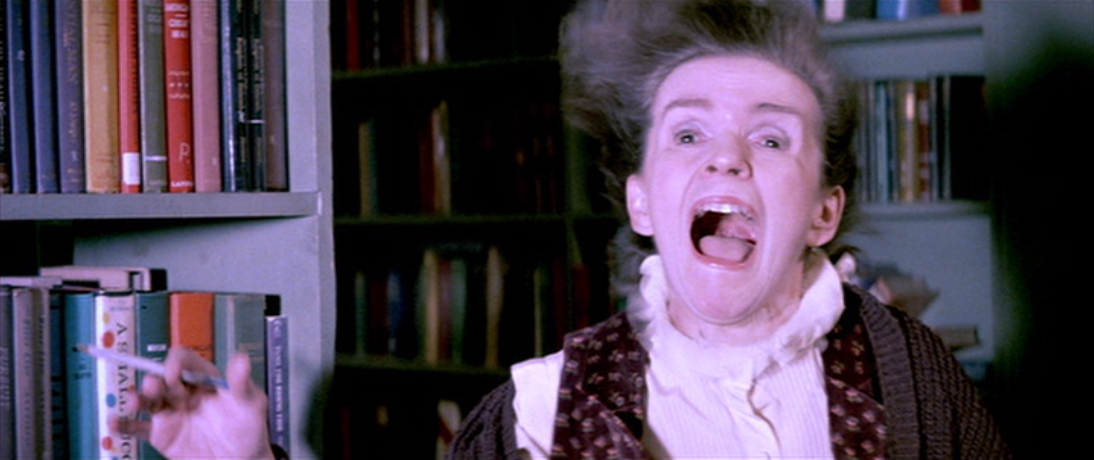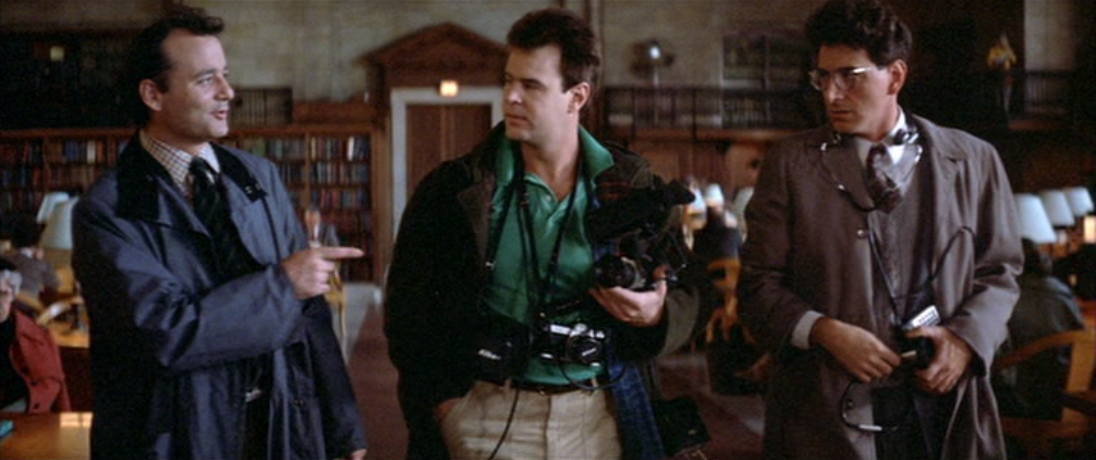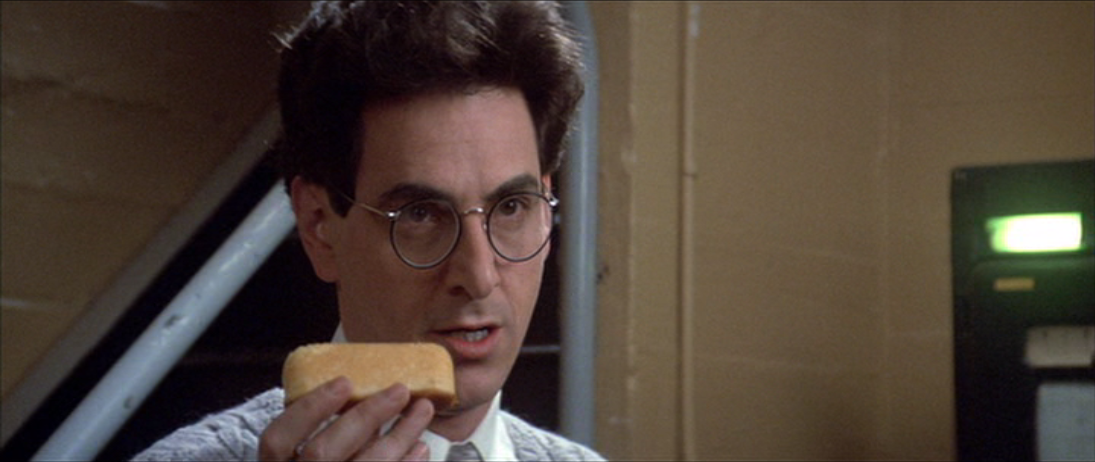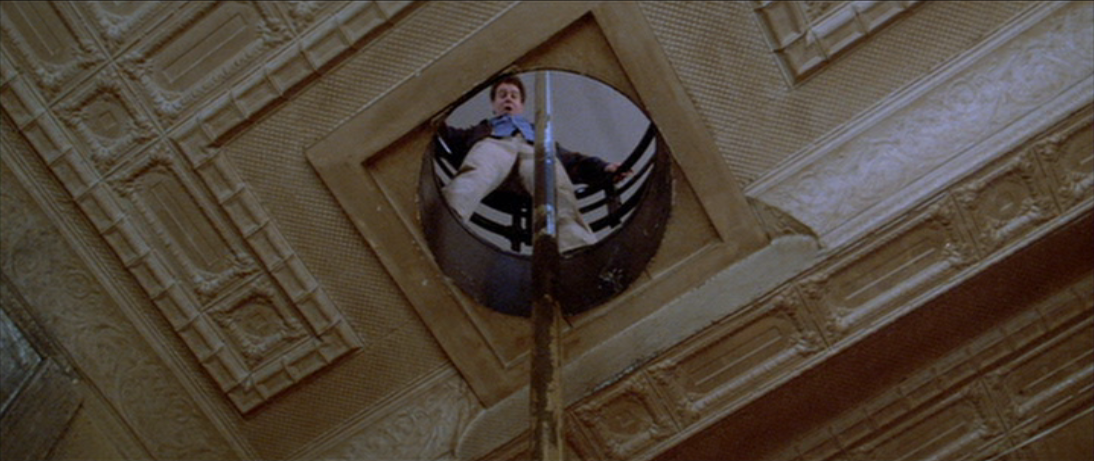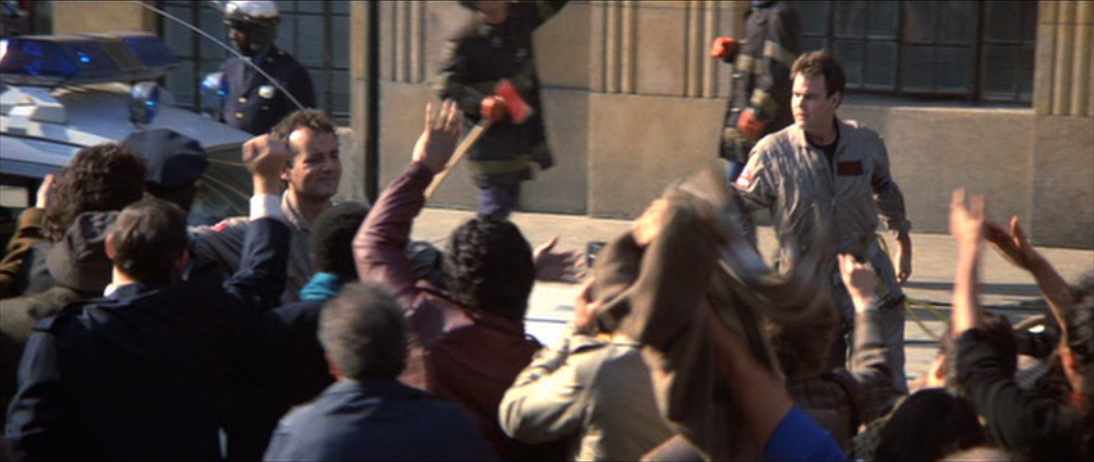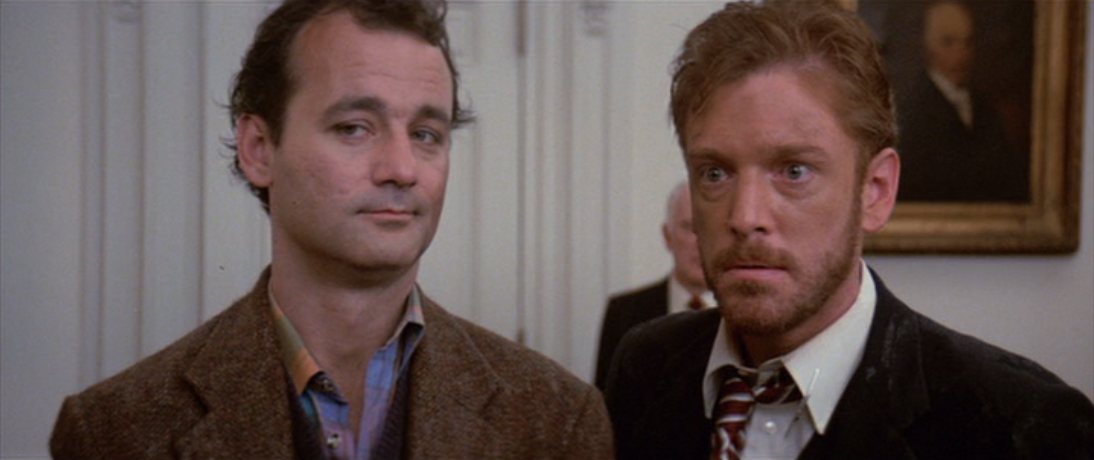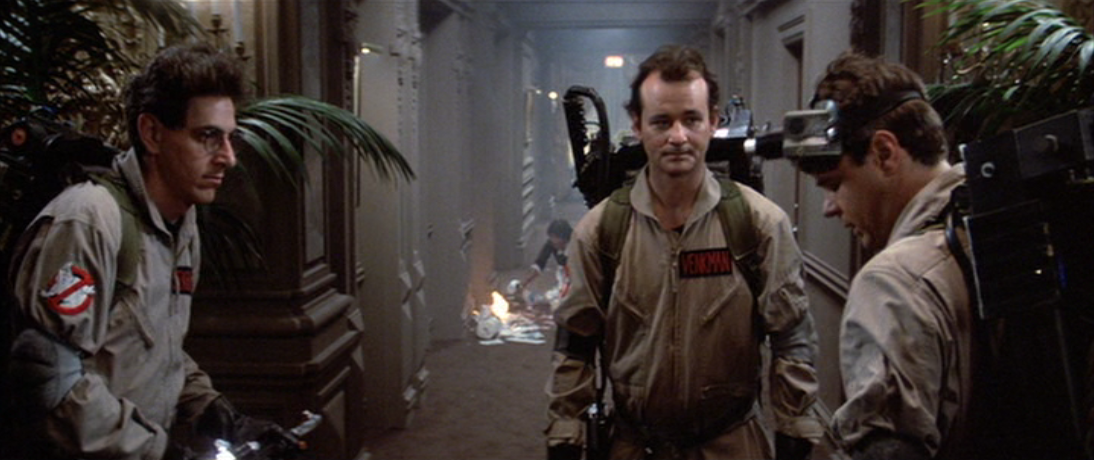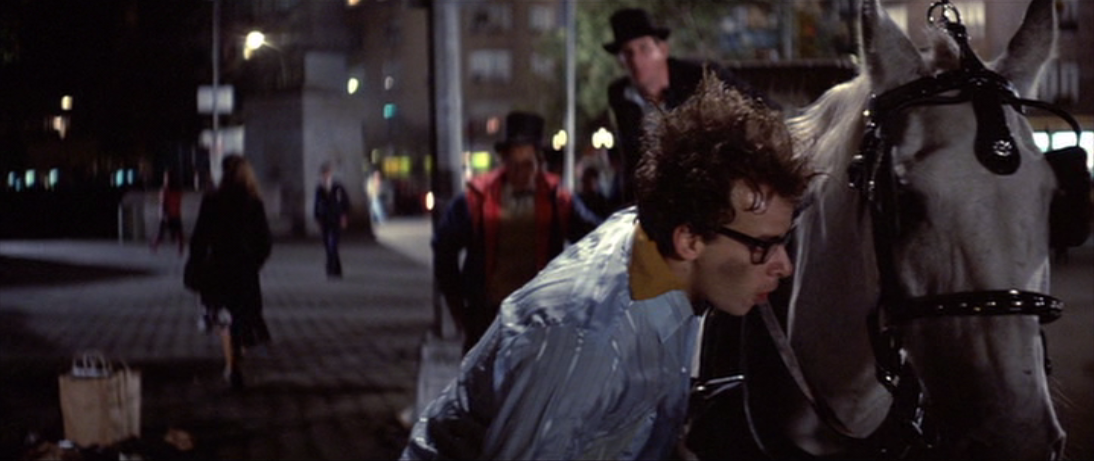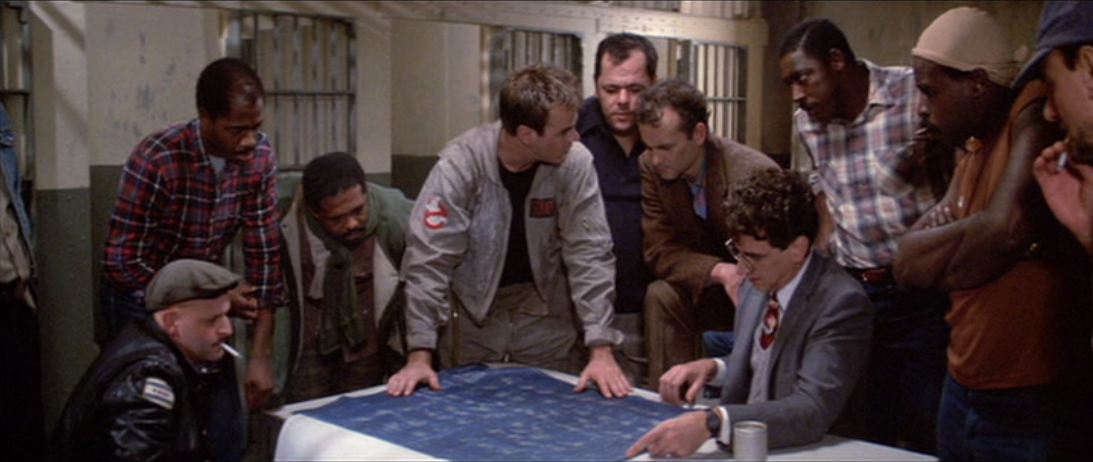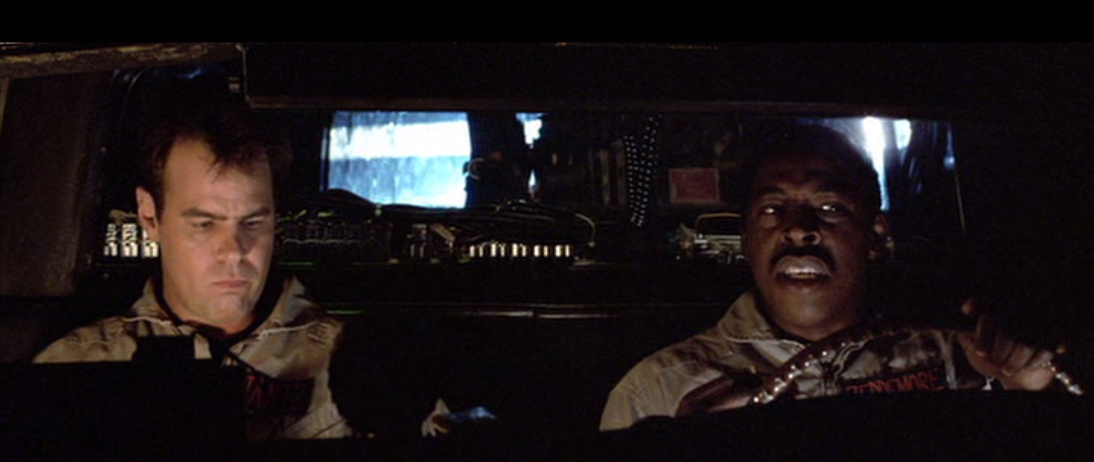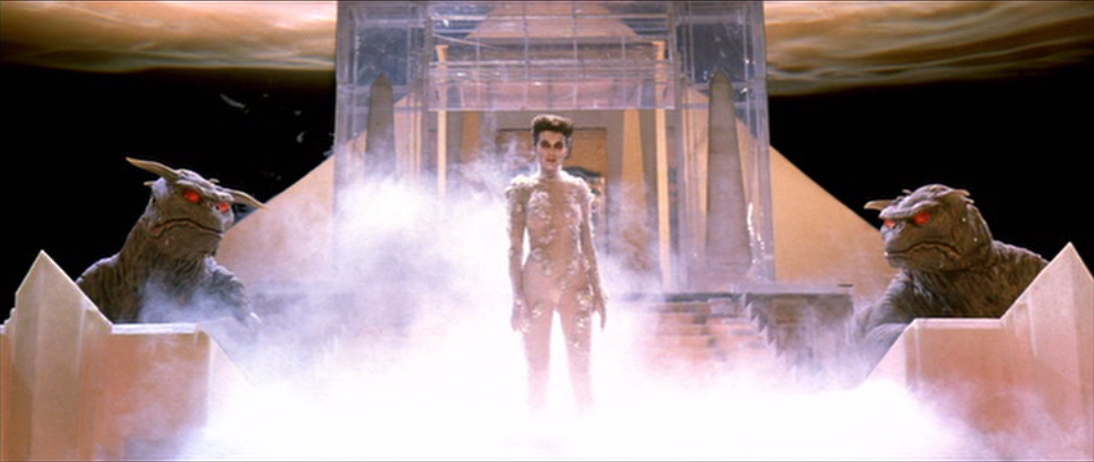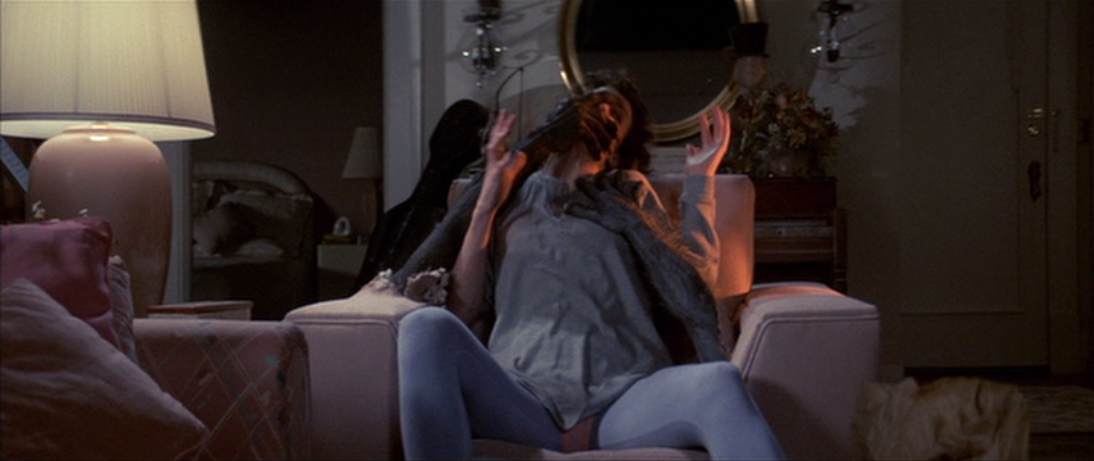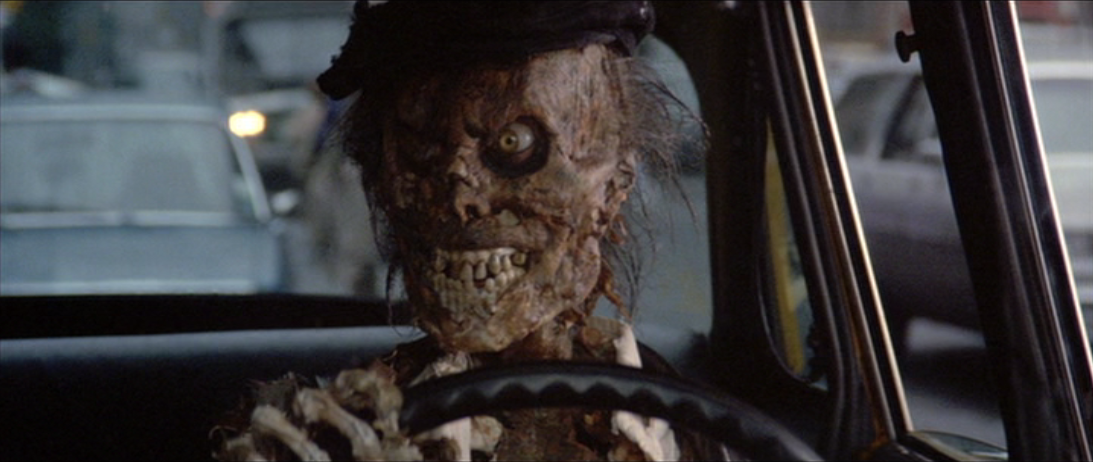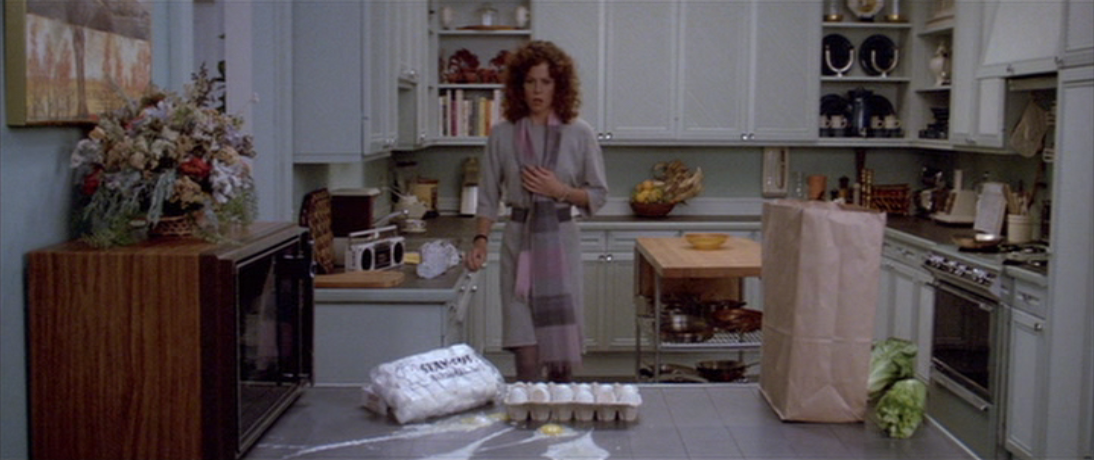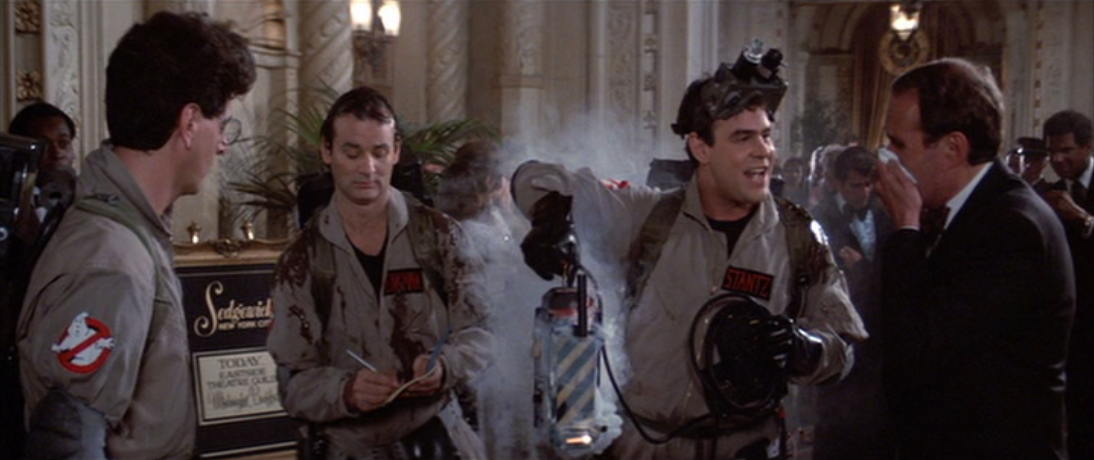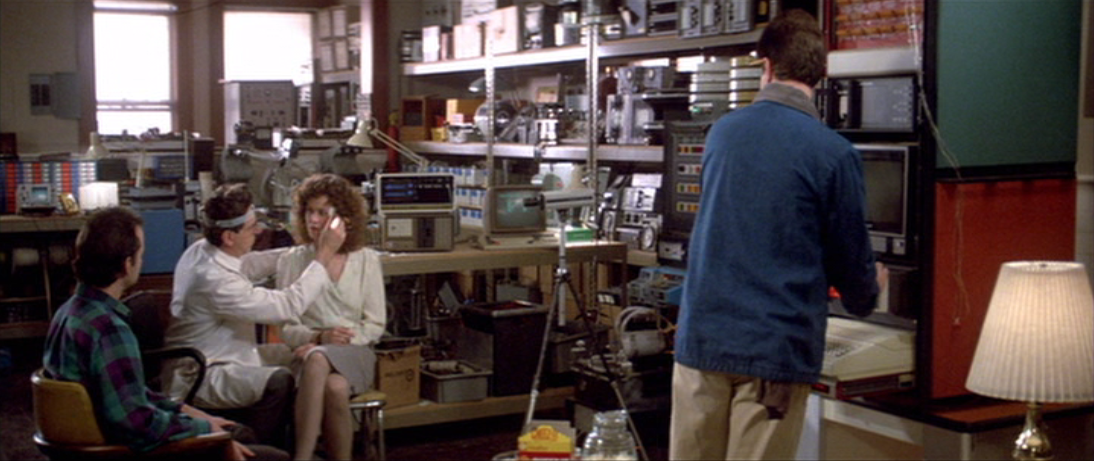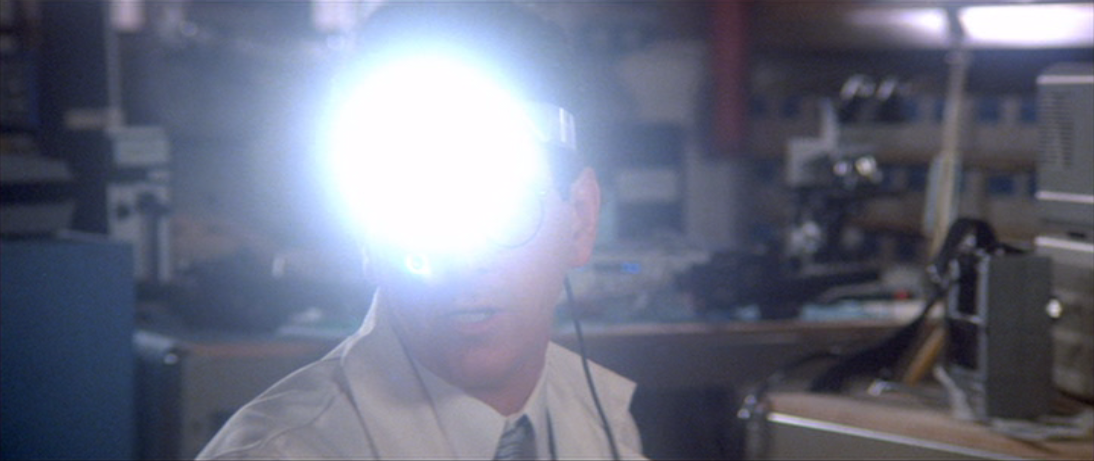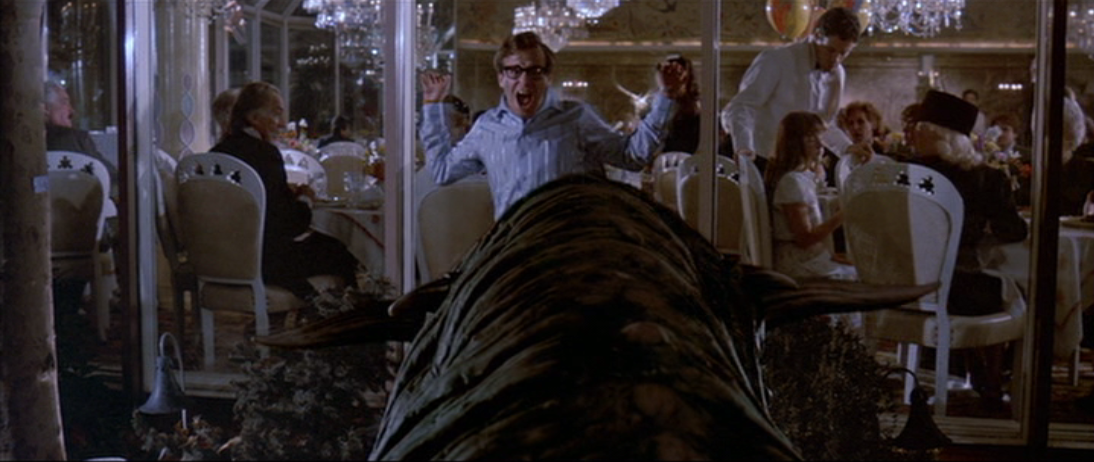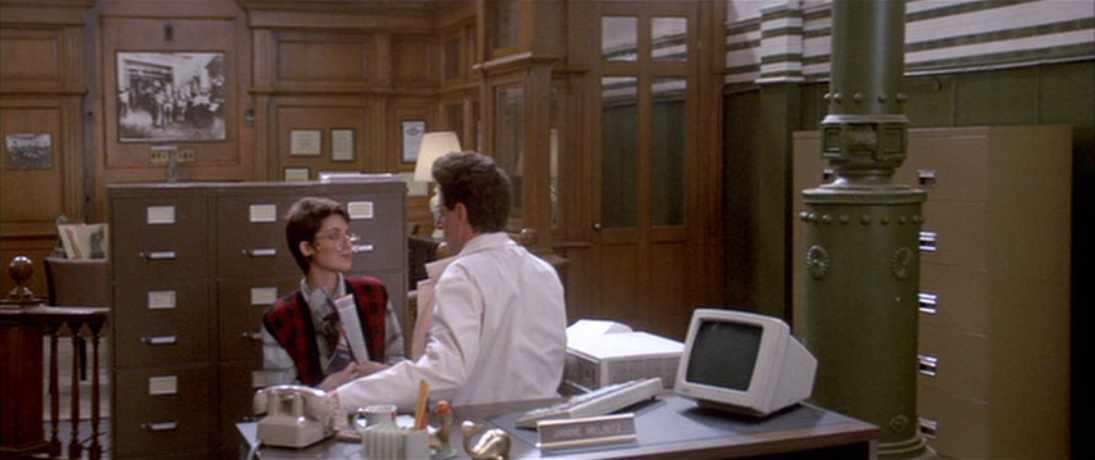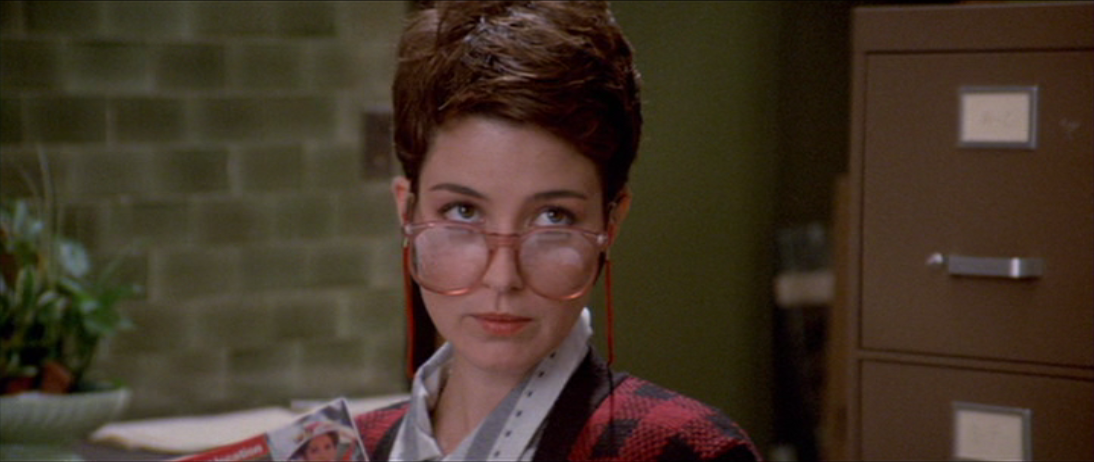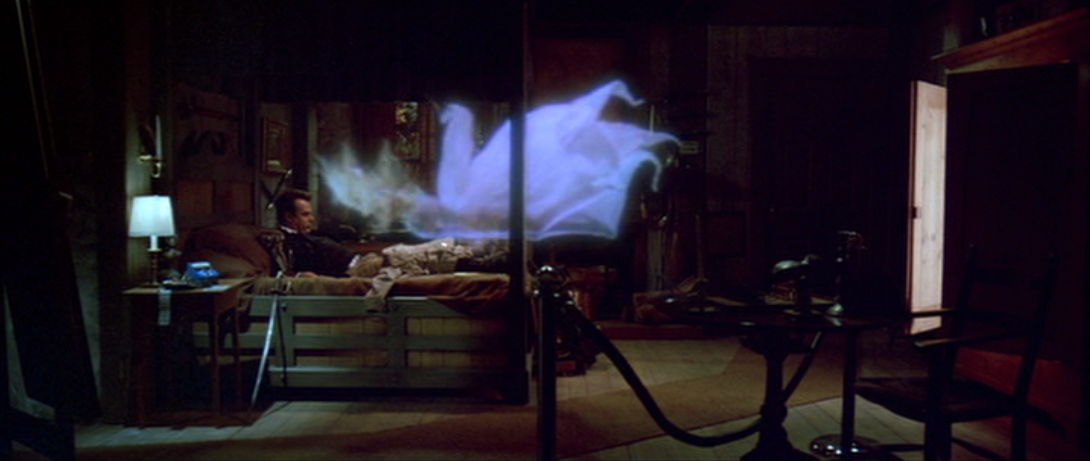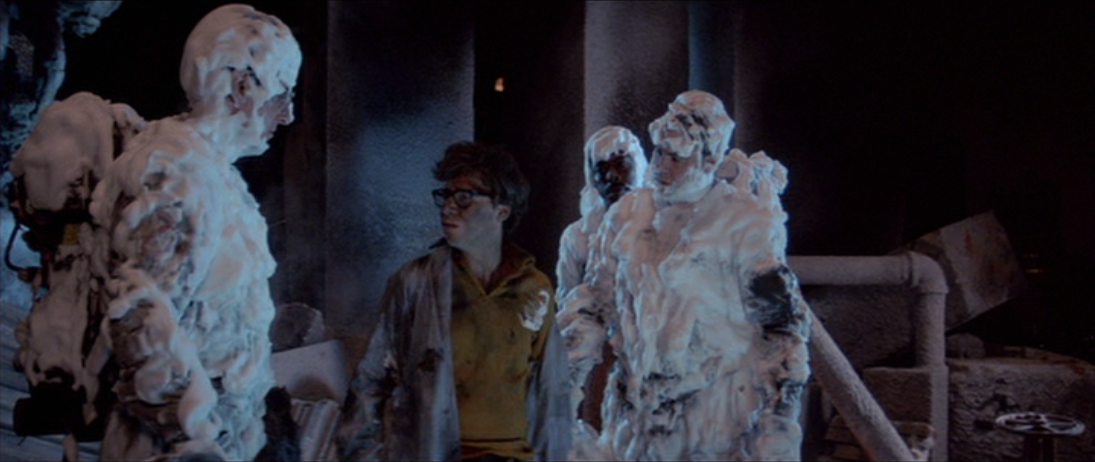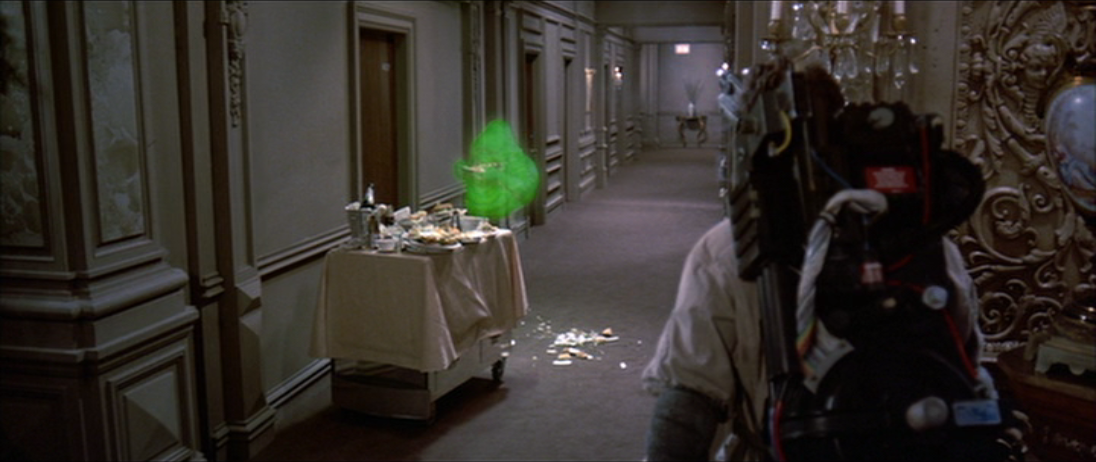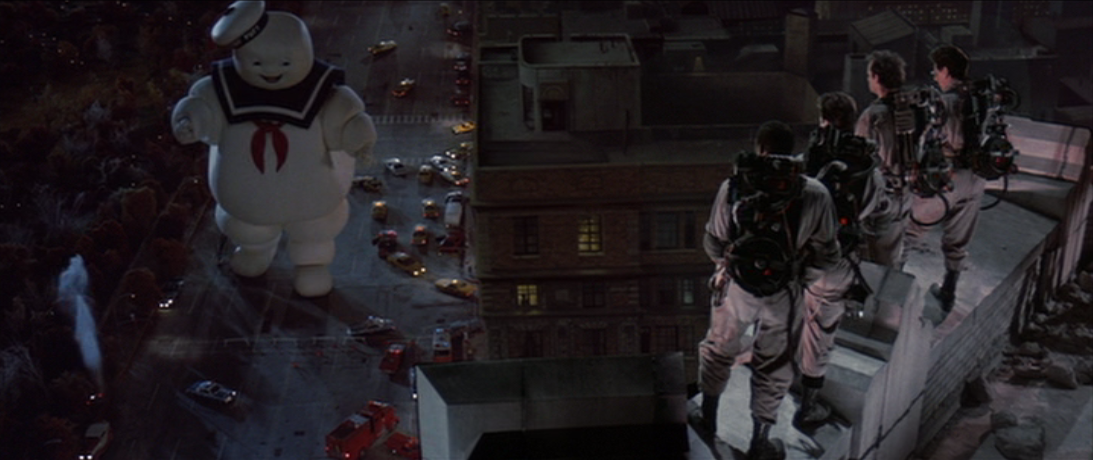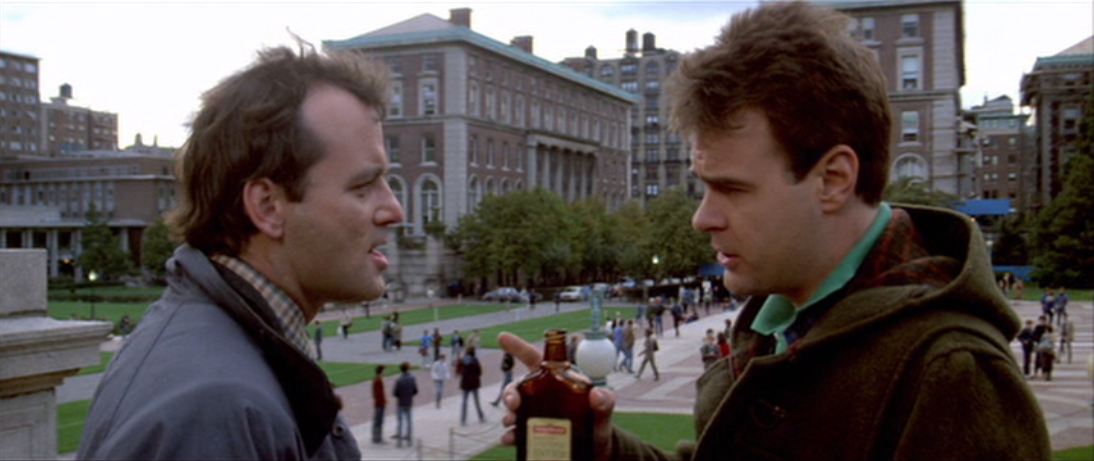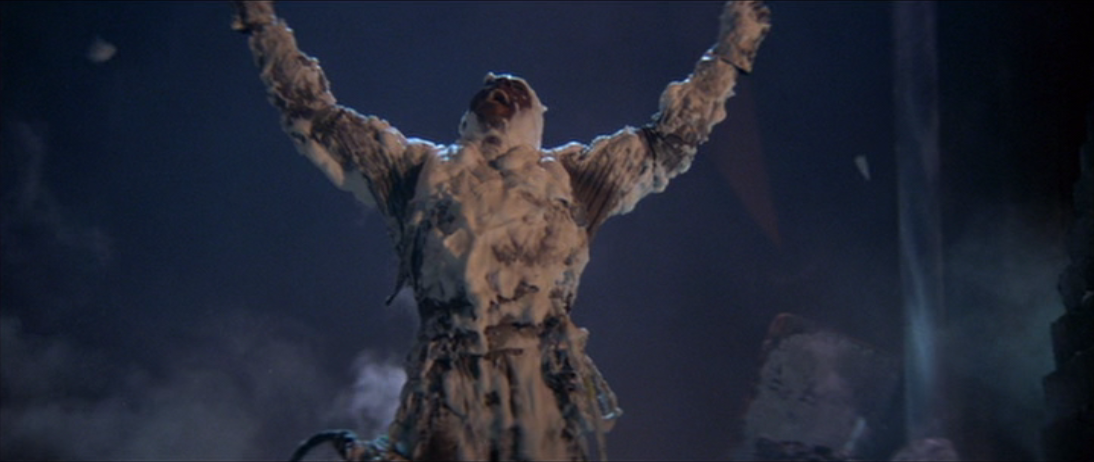I ended the last review promising to discuss the most idiotic controversy in modern history. By that I mean there is no “correct” side by any stretch of the imagination. Whoever you align yourself with, you’re aligning yourself with a pack of idiots saying idiotic things for idiotic reasons. More ink has been spilled on 2016’s Ghostbusters than has been spilled on most films, and only a small fraction of that ink has been used to say anything remotely intelligent.
Sometimes I find it useful to provide a history lesson in these features. This time around, it probably would be…but I don’t know that I can stomach doing so. It’s a tiresome situation that should collectively embarrass us all to think back on.
So, hey, forgive me if I’m just hitting the highlights here. God knows you can read enough horseshit about this movie elsewhere; my own pile doesn’t need to be that big.
For the sake of ease and readability, I’m going to refer to this film as Ghostbusters ’16. Because I have to. Because I’ll have a lot to say about this movie in relation to the one it reboots and/or remakes, which has exactly the same title. Right. Now that we’ve gotten the only rational thing to say about this movie out of the way, let’s dive in.
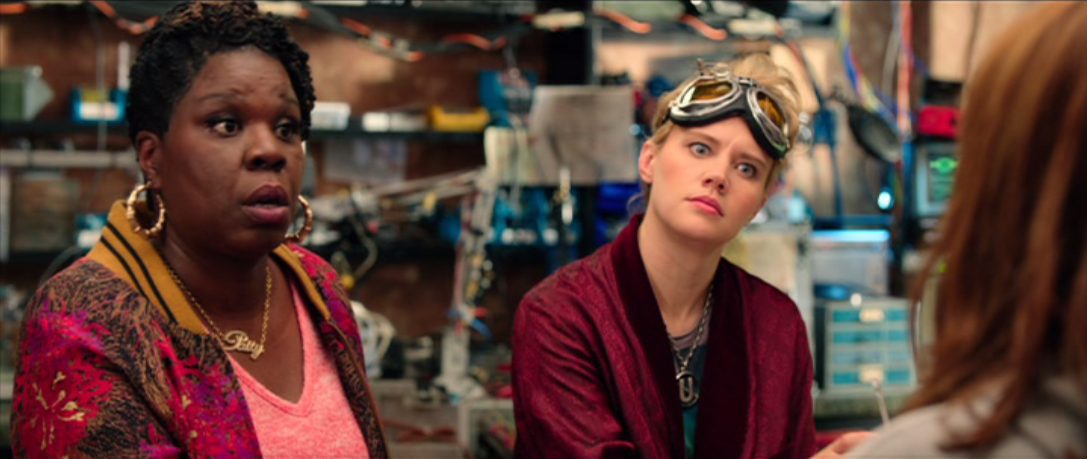
I don’t remember when I started hearing proper rumors of Ghostbusters 3. I know it was well before the 2009 video game came out, as Dan Aykroyd referred to that at the time as the closest thing we were going to get to a third film.
And that was okay. The game wasn’t too great (it was far more of an interactive movie than it was anything that allowed much expression or experimentation), but the fact that Aykroyd and Harold Ramis helped write it lent it an air of legitimacy. What’s more, nearly all of the main cast members voiced their characters. Notably missing were Sigourney Weaver and Rick Moranis, but all four Ghostbusters were played by the same actors, Annie Potts voiced Janine, William Atherton played a returning Walter Peck, and Max von Sydow, who voiced Vigo in the second film, brought the Carpathian back to life once more.
So, fine. I wish the game were great and worth replaying (or any fun whatsoever), but really the main duty it fulfilled, so far as I was concerned, is that it was the final nail in the coffin of Ghostbusters 3. Elements of Aykroyd’s script for a third film even made it into the game, but I personally can’t give any indication as to how true it was to his vision.
And I like that the game killed Ghostbusters 3. I like that because I didn’t want Ghostbusters 3.
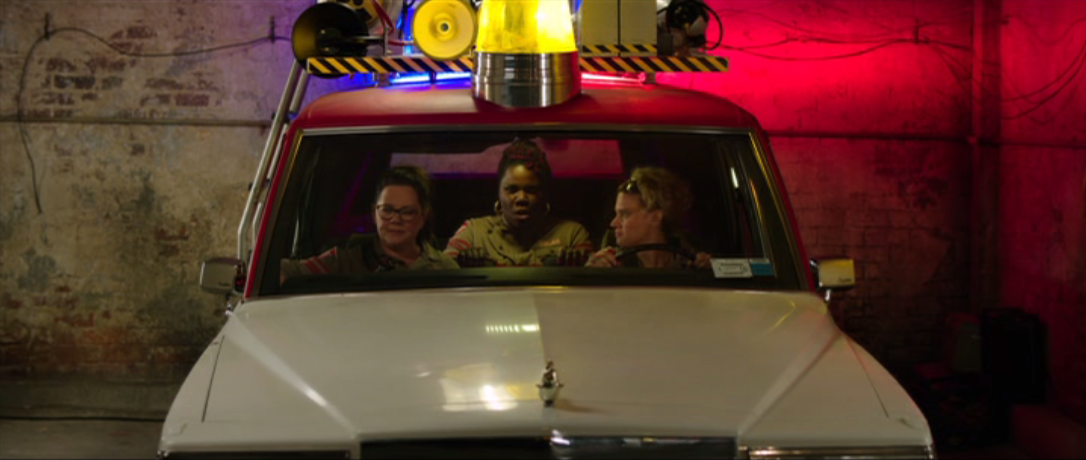
Whenever those rumors were circulating — around 2005, let’s say — the idea was already that Bill Murray, Ernie Hudson, Aykroyd, and Ramis were too old to play their parts. The aging Ghostbusters would take on younger apprentices, who would then lead the franchise forward on their own.
This didn’t sound especially appealing. After a masterpiece and a good film — and a fondly remembered cartoon with a stellar voice cast — was it really worth a late-game third installment just to wave goodbye?
The original Ghostbusters was the textbook illustration of lightning in a bottle. Indeed, to continue with metaphors of electrostatic discharge, the second film proved that lightning wasn’t going to strike twice.
I didn’t really want a third movie. Not for the sake of passing a torch nobody was asking to be passed. Not for the sake of rubbing our faces in how old and fat and bald the actors were now just to joke about it.
In other words, when the prospect of Ghostbusters 3 was realistically floated, starring the original cast, written by the original scribes, and taking place in the same universe, I wasn’t interested. I didn’t want it. I was glad that the project died. So was Bill Murray, who was so reluctant to sign up for the project that Aykroyd toyed with the idea of killing off Venkman.
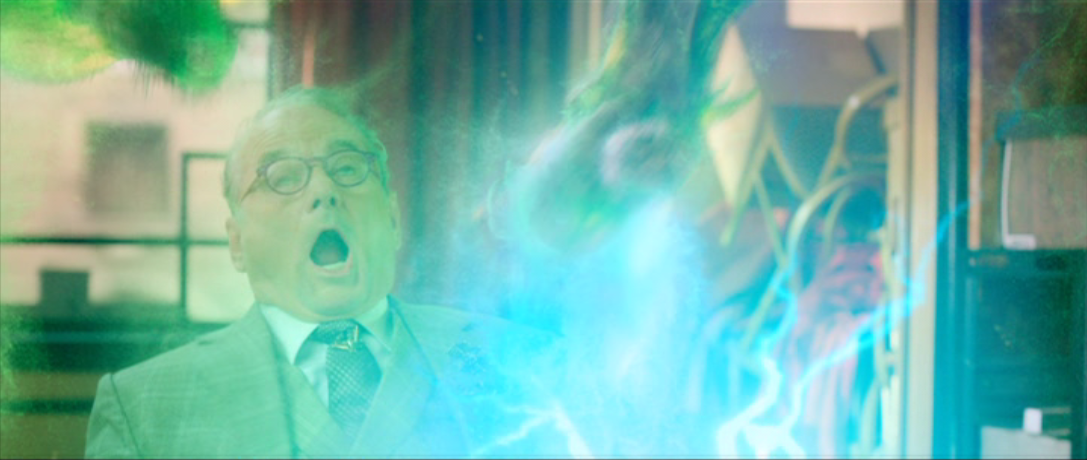
What a great movie this could have been! The best character is dead and we get to watch the others slowly die. What a treat!
I’m saying all of this to make clear that when I tell you I wasn’t excited about Ghostbusters ’16, it wasn’t due to sexism or gatekeeping or anything to that effect. Faced with the prospect of a third film by the original crew, I said, “No, thank you.” It shouldn’t be at all surprising or controversial, then, that I also turned down a cheaper, less interesting substitute.
Ghostbusters 3 was dead. The video game gave us our canonical third story, and nobody was asking for anything more.
Nobody except, of course, Columbia Pictures, which twenty-odd years after the release of the first film for some reason still liked money. More scripts for a potential Ghostbusters 3 were written, rewritten, punched up, and discarded. New writers were brought on and let go repeatedly. Bill Murray made it clear he wasn’t interested. That stopped nothing. Harold Ramis died in 2014. That finally did.
The creative team was faced with the prospect of having only two of the original Ghostbusters on board, and one of them was Winston. The project was canned, finally, for good.
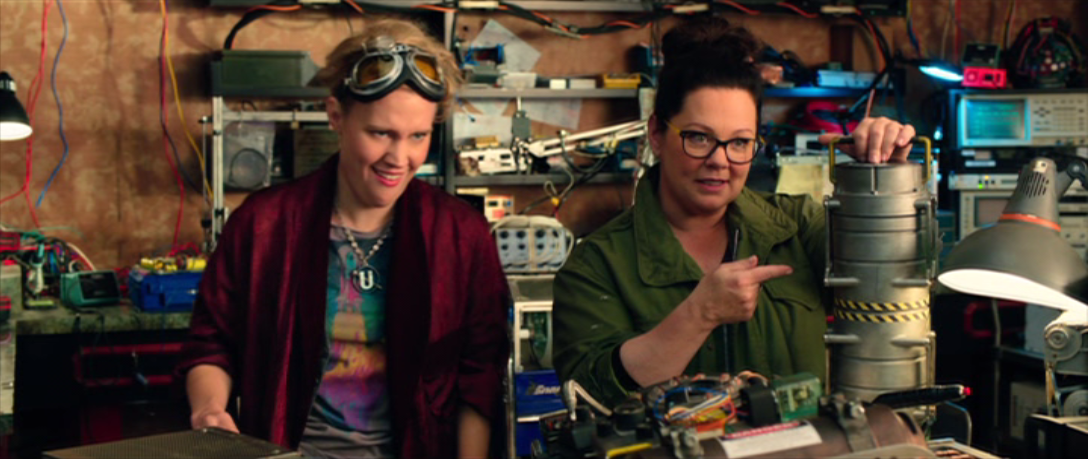
Kind of.
That same year, it was decided that the third Ghostbusters film would be a reboot/remake. If you’re wondering why I’m using both of those terms, it’s complicated. I say “reboot” because it was intended to serve as the first film of a new series under the Ghostbusters banner. (The cast signed contracts committing them for three films.) I say “remake” because Ghostbusters ’16 claims in its own credits that it’s based on the original Ghostbusters. And, frankly, the confusion about what the fuck this movie even is carries right on through the experience of watching it.
But we’ll get to that.
There were plenty of Ghostbusters fans who were already disinterested in the project. I was absolutely one of them. Maybe it would be for somebody else what the original film was for me. That would indeed be fantastic, but I wasn’t holding my breath. As a point of comparison, I wasn’t interested in Pee-wee’s third movie, either, and I waited a long time to even give that a shot, equally convinced it would be a disappointing return. This was nothing personal; I’m just rarely keen on modern cash-ins on old properties.
The true backlash to Ghostbusters ’16 didn’t come until we started getting details, though. It would be directed by Paul Feig, whose recent film Bridesmaids had been a major hit. Coincidentally enough, that film had a very similar financial return to the original Ghostbusters. Bridesmaids cost $32.5 million and made $288.4 million; Ghostbusters cost $30 million and made $295.2 million. In terms of raw figures, they’re damned near equal.
The problem wasn’t that Bridesmaids was a bad film or that Feig was a bad director; the movie was massively popular and a critical success. The problem was that the style of humor in Bridesmaids was almost diametrically opposite the style of humor we’d expect from Ghostbusters. Feig did not feel like a natural fit for the material. But, hey, so far, who cares?
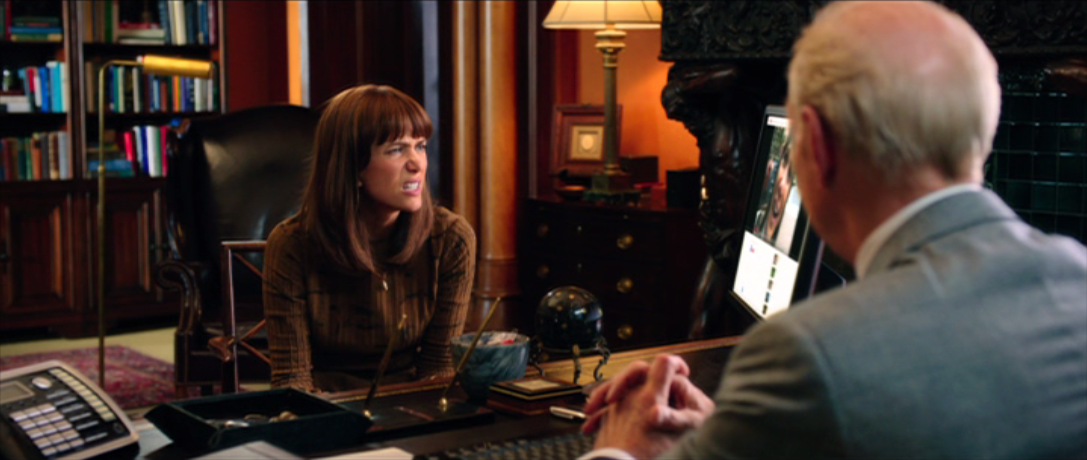
People cared the moment it became clear that Ghostbusters ’16 would have an all-female cast.
Feig cast his frequent star Melissa McCarthy as well as Kristen Wiig, Kate McKinnon, and Leslie Jones from Saturday Night Live to serve as his team of paranormal investigators. My level of disinterest remained the same. I came very quickly to feel as though that put me in the minority.
The backlash to this casting was swift, fierce, and appalling.
While there were unquestionably plenty of Ghostbusters fans who simply weren’t interested in another film — perhaps they disliked Feig, perhaps they wanted the original cast, perhaps they outgrew the franchise — the overall tone of resistance came from a place of overt, clear misogyny.
I’m certainly willing to believe that actual misogynists were in the minority. In fact, that’s what I deeply hope is the case. But their voices were loudest, strongest, and more sensational (therefore more media friendly) than whatever tepid criticisms might have been levied by more even-keeled individuals.

Hate spread and festered in the usual hotbeds. Reddit. 4chan. Breitbart. I will not repeat the kinds of things that were said. You are free to look them up. If you’d prefer to imagine them, know that they’re worse than whatever’s already in your mind.
Deliberate, organized assaults were made against the film’s YouTube trailers and IMDB page to artificially tank its ranking. The director and actors were trolled and threatened constantly online, to the point that the eventual movie attempted to capture this as a series of meta jokes. Reality was no joke, though, as Leslie Jones certainly knew. As the female Ghostbuster who was also black, she was specifically targeted, with her accounts hacked, her personal information circulated, and nude photos of her leaked.
The response and behavior on the side of the film’s detractors was abhorrent.
Then, of course, you had the defenders.
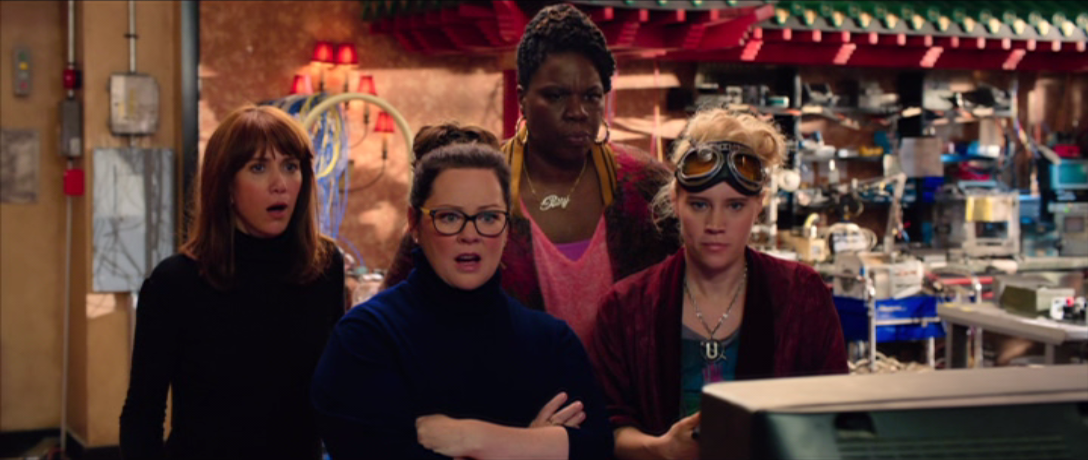
By sheer virtue of taking sides, defenders legitimized the detractors. Oh, so the detractors gave the trailer one star? I’ll give it five. The detractors won’t go see it in theaters? I’ll go twice. What I still believe was a vocal minority spat venom at a film they hadn’t seen, but it was no better to see the other side heaping praise upon a film they also hadn’t seen.
Granted, if I had to go to dinner with one of these groups of people I think you can guess which I’d choose. But, y’know, maybe we could all just let a movie be a fucking movie and not worry that you can’t see it or that you have to see it based on the fact that there are women on the god damned poster.
I remember a friend of mine, whose opinion I normally value, saying that he was going to see it as many times as he could in theaters, just to spite people. (And he probably did. He’s the kind of person who exclusively follows through on meaningless gestures.) Bear in mind, the film wasn’t even out yet. He committed to seeing a film multiple times before he had any idea whether or not he’d like it. For a personal comparison here, Wes Anderson is far and away my favorite director. Isle of Dogs, his latest film, is in theaters as I write this. History suggests that I’ll watch it multiple times, but I’m sure as shit not going to commit to that. What if it’s terrible? Yes, I’d like to support Anderson, but why on God’s green Earth would I repeatedly trade my money and time for something I don’t even like? Who would that possibly benefit?
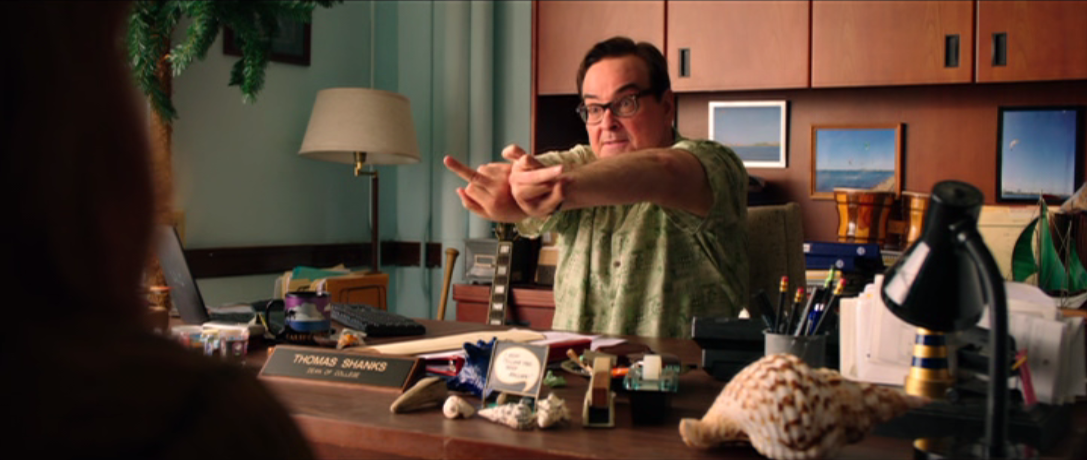
Granted, blindly forcing yourself to enjoy something is exponentially better behavior than hacking and leaking celebrity nudes, but that bar isn’t very high in itself. And as a critic — and a writer, and a not-a-moron — I can’t possibly respect somebody who forces themselves to have a positive opinion of a work of art any more than I can respect somebody who forces themselves to have a negative one.
“I’m going to see it because there are women in it” is exactly as constructive a mindset as “I’m not going to see it because there are women in it.”
I didn’t see Ghostbusters ’16 in theaters. Part of me did want to see it, just to know if it managed to live either up or down to expectations, but for much of its release, I was in Germany. I could have seen it when I got back, but I had better things to do than to rush out and spend $20 on a movie I never wanted to see in the first place.
So I didn’t watch it. Until now. Until I started this series.
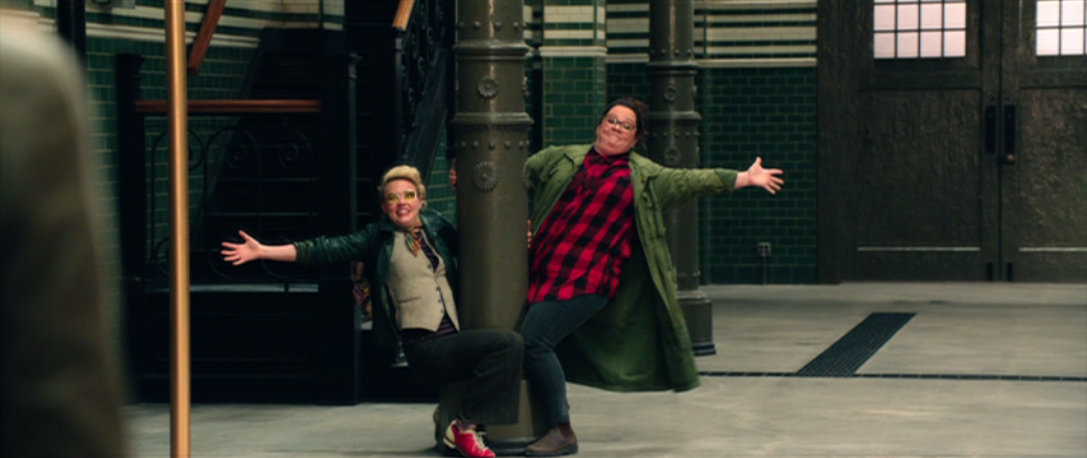
And, honestly, I’m glad that’s what happened. Because it means I get to experience it removed from both sides of that idiotically vocal response. I’m no longer a sexist if I dislike it, nor am I a feminist champion if I do like it.
I just get to watch a fucking movie.
I just get to laugh at some fucking jokes.
I just get to enjoy it or not enjoy it according to my own personal fucking preferences, and I don’t have to worry that half the fucking planet will tear me down wherever I land.
And now I’ve seen it.
And holy hell is Ghostbusters ’16 a pile of garbage.
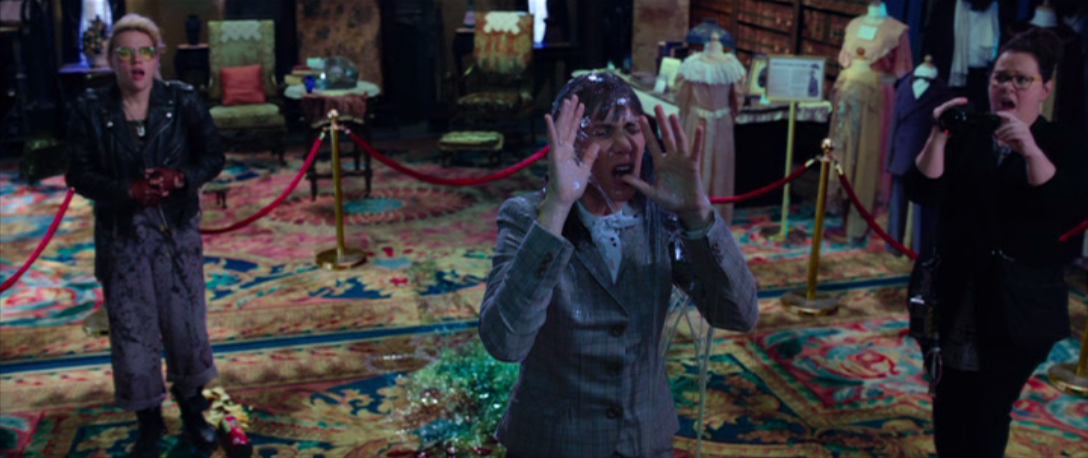
This has nothing to do with whatever dumbass “women can’t be funny” mentality is at the root of so many criticisms. They can. It’s moronic to suggest otherwise, as though “humor” were some point of biological difference between the sexes.
It isn’t, and to prove it, we need look no further than the breeding ground for many Ghostbusters cast members throughout the three films: Saturday Night Live.
That show — over the course of its admittedly long tenure — has given us Gilda Radner, Jane Curtin, Julia Louis-Dreyfus, Joan Cusack, Nora Dunn, Jan Hooks, Sarah Silverman, Cheri Oteri, Maya Rudolph, Tina Fey, Amy Poehler, and a hell of a lot more. I’m listing only the ones that stood out to me, personally, as a viewer. Your list may be longer. Your list may even consist entirely of different funny women, just as our lists of favorite Saturday Night Live men would probably differ.
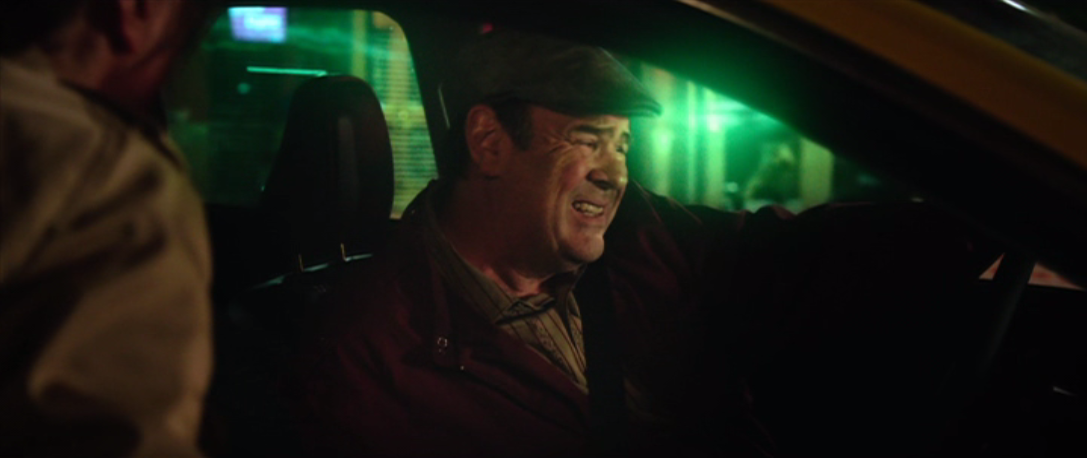
That’s because Saturday Night Live has often done a great job of providing its women with a similar visibility to what it provides its men. I wish I could say “always” instead of “often” and “the same” instead of “similar,” but we have to take what we can get. Part of this is due to the nature of the show, of course; women in real life make news, so they need a cadre of females in the cast to play them. And, much of the time, that’s what Saturday Night Live seems to view its female cast members as: a logistical necessity.
In the early 2000s, though, that began to change. Tina Fey joined the cast in Season 26, Amy Poehler joined in Season 27, and gradually, perfectly, naturally, the show began spotlighting its massive female talent in a way it never truly had before. This may certainly have something to do with Fey taking the reins as head writer, but I think it’s safe to say that it had more to do with the sheer volume of talented females the show now had at once. It says something that such sketch comedy naturals as Bill Hader, Jason Sudeikis, Fred Armisen, Will Forte, and Chris Parnell were commonly relegated to supporting roles and utilitarian impersonations. You know. The kind of material many female cast members had been given in the past.
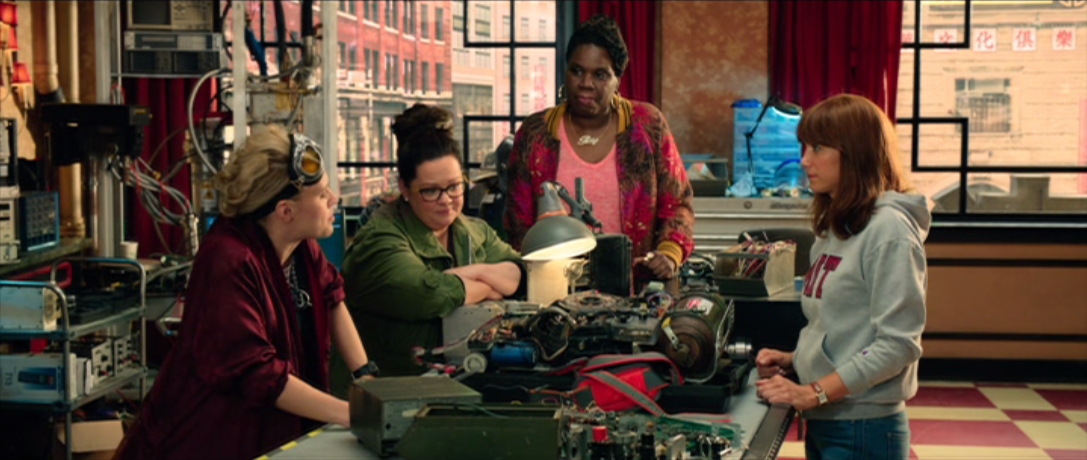
And so the stage was set for Ghostbusters ’16 to draw from Saturday Night Live, just as the original film had. That’s a good thing. Wiig, McKinnon, and Jones are funny people. They have a tremendous amount of talent. Period.
You may not enjoy their particular talents, and that’s fine. I’m by no means a guy that will tell you all comedy must be appreciated. But these actors know what they’re good at, and, in the right hands, within the right contexts, they are unquestionably funny enough to carry a full-length comedy film.
Just…not this one.
As nitpicky as it may sound, the biggest problem with Ghostbusters ’16 is its title. Had it been called anything else, it wouldn’t have brought with it a mountain of what turned out to be unreachable expectations. It would have been a movie that audiences could anticipate, engage with, and remember on its own merits.
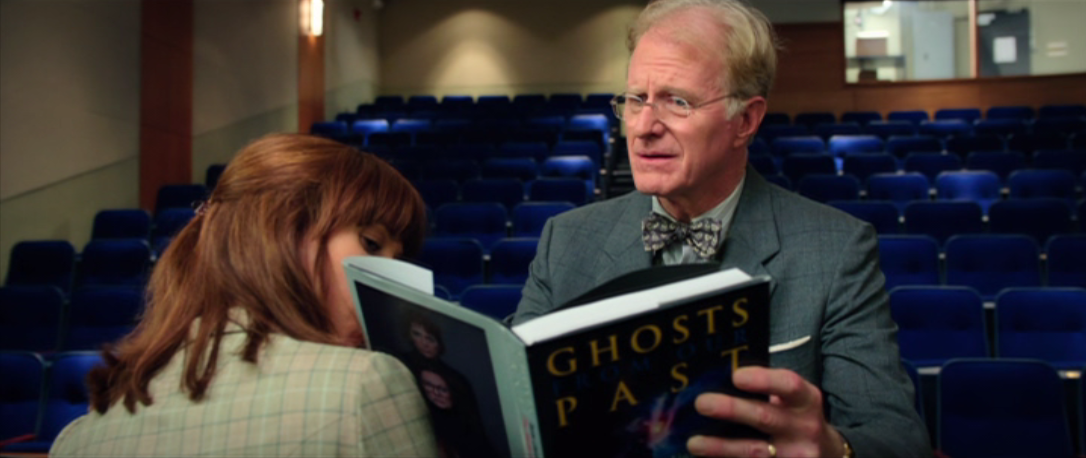
That doesn’t necessarily mean it would have been a better film. In fact, I’m pretty damned sure it wouldn’t have been. But it would at least be a film that was free of controversy, ire, and stigma. It would prevent it from inviting active, inevitable comparison with the beloved — and genuinely fantastic — original.
It handed itself a legacy that the original had to earn. That is always unlikely to end well.
Ghostbusters ’16 does itself no favors by feeling messy, aimless, and incompetent by turns. Wiig, McKinnon, McCarthy, and Jones all do their best to make the film entertaining, but there’s a pervasive lack of focus that prevents anything from actually sticking together.
A funny movie isn’t funny just because the people in it try to do funny things. Funny movies are funny because they’re sharply written. Because they’re carefully paced. Because anything that distracts from the joke it’s trying to make is left on the cutting room floor. Because it knows when to quit.
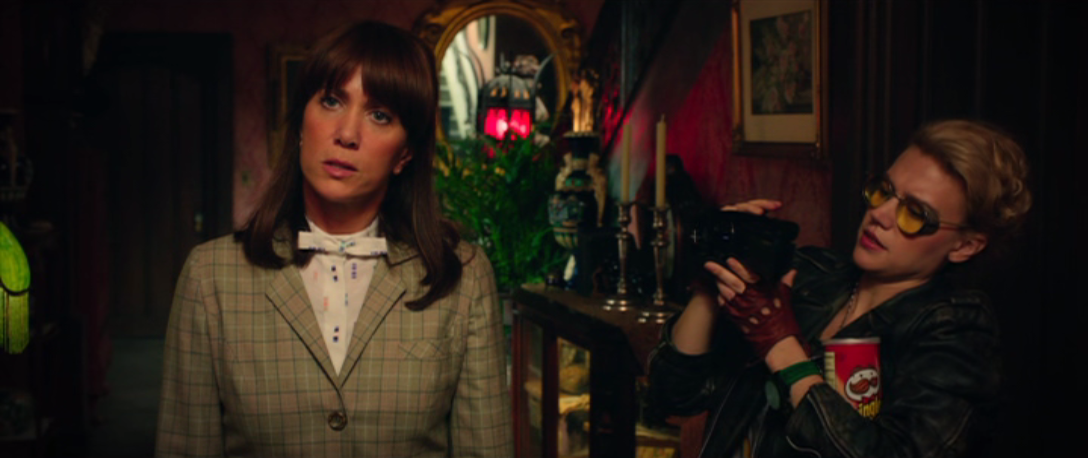
None of that applies to Ghostbusters ’16. Not even slightly. Part of me even wonders if there was a script. Was this shot like Curb Your Enthusiasm, with Feig telling the actors the two or three things that needed to happen in each scene and leaving the rest up to chance?
The lack of focus and confusion about what the movie is really shouldn’t be a factor here. After all, it’s about another team of Ghostbusters coming together, starting a business, and fighting some supernatural evil. As the first movie proved, you don’t need to have much focus at all; touch on the important bits, make some great jokes, and give us characters worth spending time with.
The original Ghostbusters worked because, as I stated in that review, the characters interacted in identifiable ways. With the exception of Winston, who joins the team later, these are three men who have known each other and worked together for quite some time. They know each other’s strengths, weaknesses, and quirks. They know who to rely on at which time. They know how to handle each other. They know how to both accomplish things and enjoy the time they spend together.
You know. Like colleagues. And also like friends.
The four Ghostbusters in this movie, by contrast, don’t even seem to like each other.
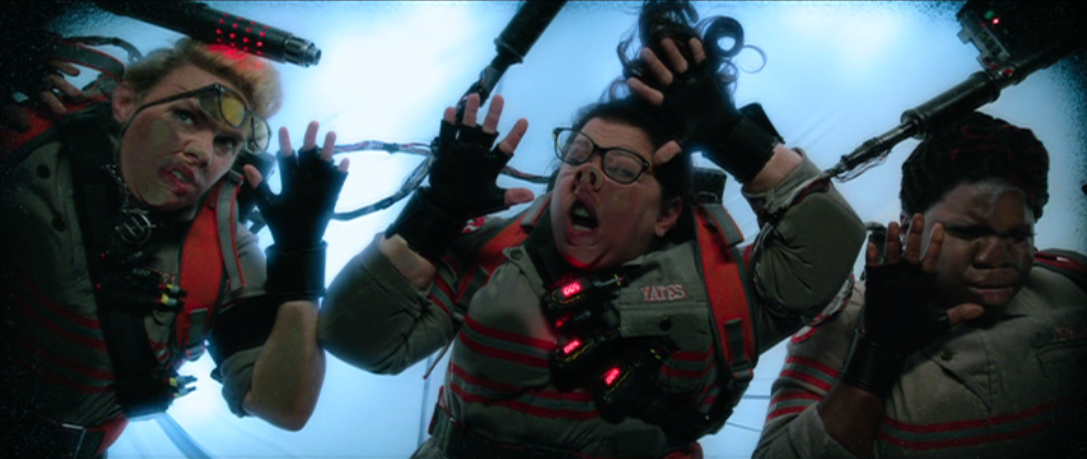
They say they do, don’t get me wrong, but I never felt it. One of them tells a joke, the next one tells a joke, the third one tells a joke, the last one tells a joke. That’s not interaction; that’s four characters reciting their lines. We’re expressly told that two of these characters have a history, but never once does the film feel compelled to make us believe it.
Part of the reason this doesn’t work is that the characters are never defined to begin with. It’s difficult to invest in a relationship without knowing who either party is even meant to be.
Again, let’s dive back into my review of the first film. Egon was the brains, Ray was the heart, Peter was the swagger, and Winston was the hired gun. For two films and a cartoon series, those descriptions were the cores of each character, and they easily defined both their roles on the team and their roles in the film.
Now let’s try to break down the characters in Ghostbusters ’16 in a similar way.
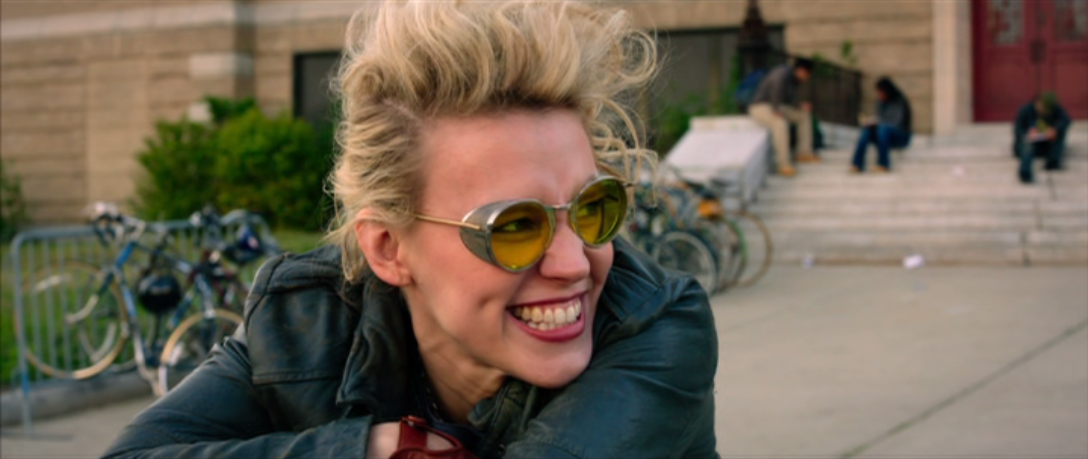
Who is the brains? Well, that’s an easy one. It’s obviously Holtzmann, played by Kate McKinnon. She develops and builds the team’s equipment, after all, and seems to perform the majority of the experiments, so, there. Simple.
Except that McCarthy’s character Abby seems to know the most about what’s actually going on and has the responsibility of expositing it at regular intervals, so maybe she’s the brains of the operation. She also started investigating paranormal activity before the team even existed, which reinforces that idea. Okay. So maybe she’s the brains. Or she’s also the brains.
But then there’s Wiig as Erin, a respected professor at Columbia on the verge of earning her tenure. She also assisted Abby in writing a book about the supernatural, which kicks the entire plot into gear. What’s more, she serves as a skeptic who demands evidence and refuses to believe anything blindly, which is certainly a mark of intelligence whether or not skepticism leads her in the right direction so, okay, she’s the brains, too. Three of them are the brains.
…but Jones plays Patty who is explicitly hired onto the team because of her deep and extensive knowledge of New York City’s history, which allows the Ghostbusters to piece together the clues that will explain what is happening meaning all four of them are the brains and…
Ugh. Okay. Maybe we shouldn’t have started with brains. Bad example, right?
Let’s move onto the heart. Who on the team is the impulsive one who dives headlong into things without fully thinking them through, but who ultimately means well?
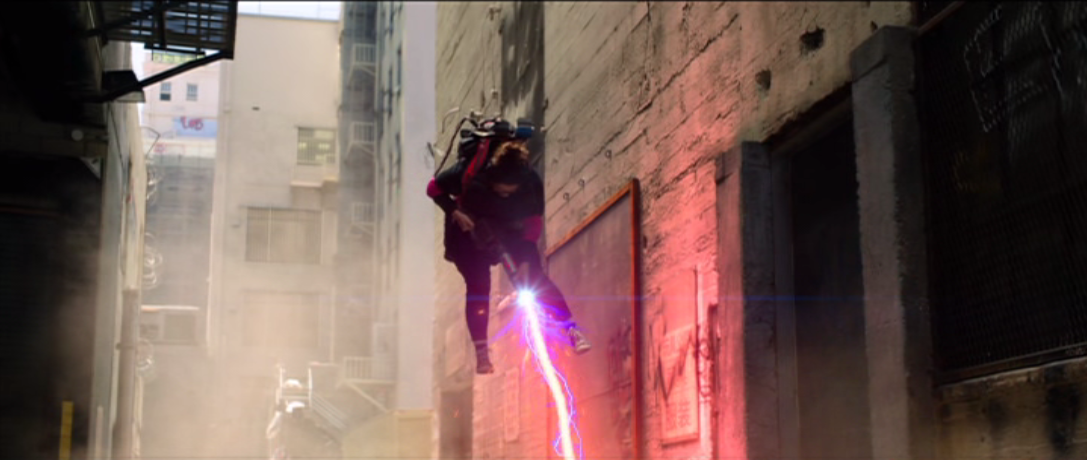
That’s clearly Abby, who published an old manuscript without considering what impact it might have on the career of her coauthor and dove excitedly into paranormal investigation without any of the proper equipment, experience, or ability to protect herself. Easy.
Except that Patty qualifies as well, readily launching into loud tirades at passers by, finagling herself a spot on the team without actually knowing who the Ghostbusters are or what they do, and borrowing her uncle’s hearse without consideration for the damage it may sustain before he needs it back. Okay. So that’s two of them sharing that role.
…but really it’s three of them, because Wiig confusingly sheds her professional demeanor almost as soon as she links back up with Abby and becomes a totally different character, fawning moronically over their new secretary and freeing a dangerous ghost just for the sake of proving a nebulous point to somebody she’d never met before.
Oh, and, whoops, actually it’s Holtzmann, too, who gets so caught up in an impromptu dance routine that she starts a fire and then hesitates to put it out, and who sings for some reason when their receptionist is in mortal danger, and who licks the equipment and who puts her feet up on the mayor’s desk and who and who and who.
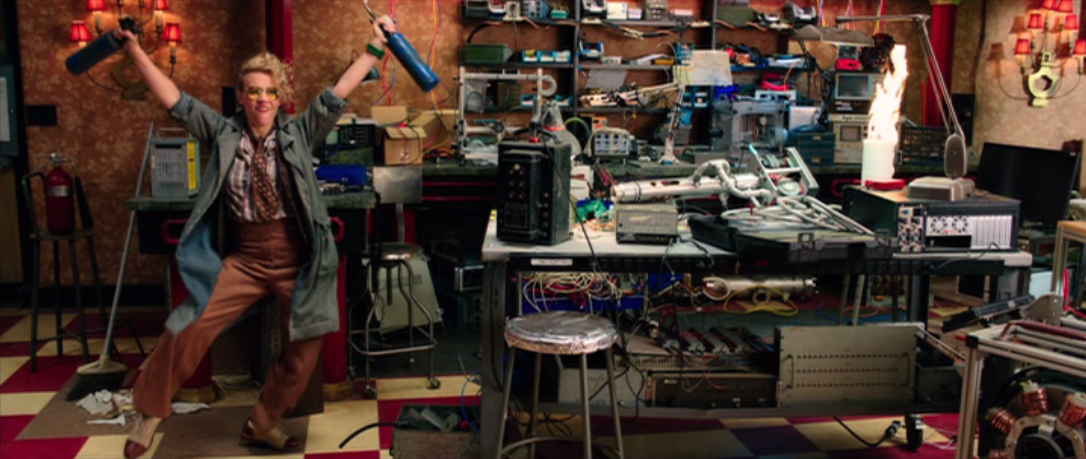
You get the picture. There are also clear examples of each of them acting the part of the swagger, and of each of them acting the part of the hired gun. I’ll spare you another few hundred words with the assurance that watching the film with this in mind will make it abundantly clear that every one of these characters plays every one of these roles at once.
And then…well…what’s the point? Ramis in the original film demonstrated not only the importance of having a great straight man, but of the appeal of having one. He was my favorite character as a kid, and it isn’t because he made me laugh the most. It’s because I understood who he was. On some level, sure, I identified with the guy, but largely it was his role in the film that I appreciated most. He’s who I wanted to be on the schoolyard.
Others, of course, wanted to be Peter. My brother, I remember well, always wanted to be Ray. And there were little Winstons and Janines out there as well. In some cases, the casting was logistical. In other cases, it was because we knew who these characters were, we knew how they’d act and react in certain situations (as well as with each other), and we knew what we enjoyed about them.
Of these four new characters, who would I have been? Who would anybody be? They’re each always everything. We don’t have four characters to choose from, we have an omnicharacter operating four mouths.
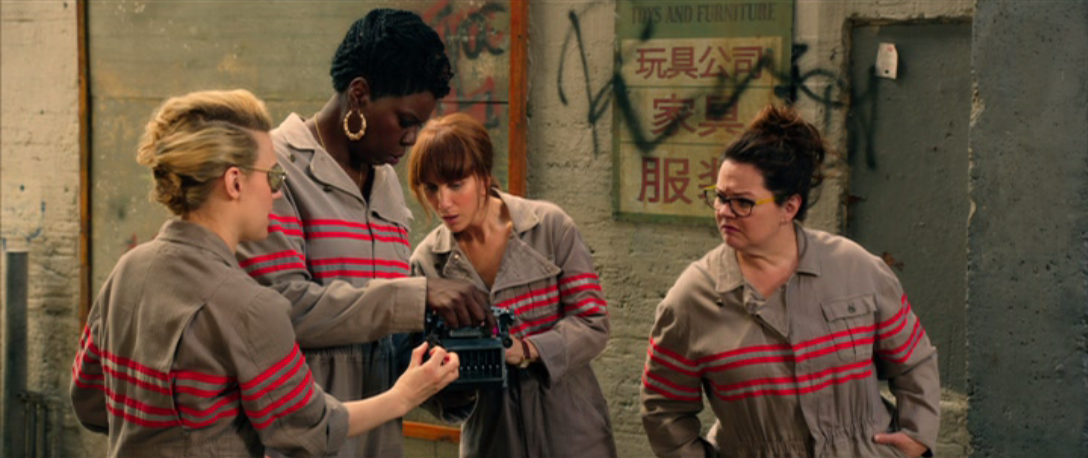
This is a crisis of comedy. They can’t all deliver the same kinds of jokes, and yet they do. “Do-Re-Egon” works only because of Egon’s character. “The flowers are still standing” works only because of Peter’s. “No offense, guys, but I gotta get my own lawyer” works only because of Winston’s. “You’ve got to try this pole!” works only because of Ray’s.
Across the previous two films, I’d have a very long list of jokes that are specific to the characters, and a very short list of those that are interchangeable. In Ghostbusters ’16, I can’t think of a single joke that could only have been made by one character.
And that’s because they aren’t characters. They’re funny women who are being crammed into a format without any regard for their specific talents or potential for characterization. They’re all the same vague all-purpose comedybot with traits and motivations that shift from scene to scene and from line to line so that they can all draw from the same pool of gags. The characters don’t gibe; they jostle.
There’s not a single natural fit in the movie because the actors aren’t allowed to behave naturally.
Never is this more evident than when anybody tries to deliver the kind of specialized technobabble (paranormobabble?) that Ramis and Aykroyd deployed regularly in the first two films. Listen to Abby say something like “a full-torso transmogrification with corporeal aggression,” and it’s impossible to see anything but McCarthy struggling through a line she can’t imagine anyone would ever say, let alone her own character. She delivers it and many others the same way I try to work mucus up out of my throat when I’m feeling congested. Egon and Ray speak this way because that’s who they are. Abby speaks this way because the script says she has to.
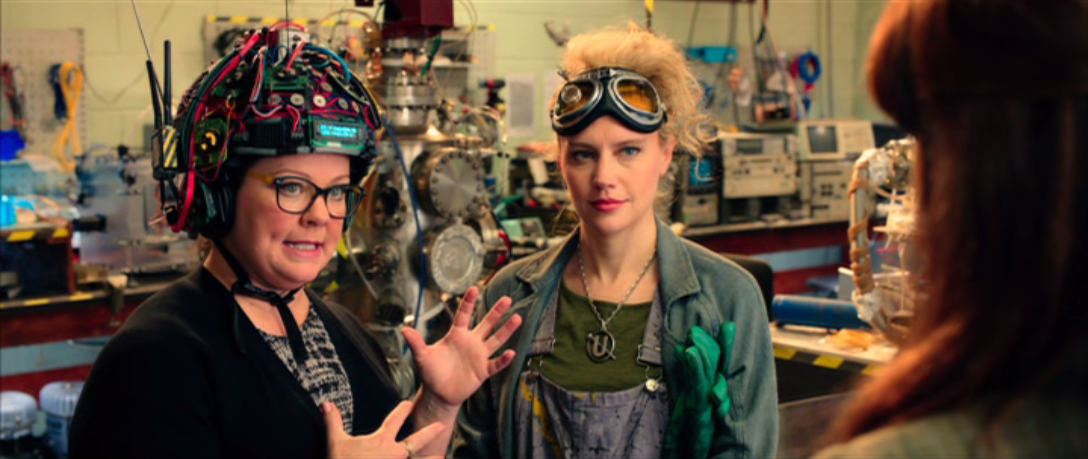
There’s also a really weird and out-of-place reliance on pop-culture references. The other two films may have mentioned Twinkies and Slinkies and Parcheesi, but I don’t think there were many moments that expected you to laugh just because you recognized the name of something.
Ghostbusters ’16, by contrast, has a scene in which the characters completely demolish the flow of the narrative so that they can list Patrick Swayze movies to each other. Not because it has any bearing on anything that’s happening, sheds light on anything that will happen, or relates to the film itself in any larger way, but rather because people might hear the titles Road House and Point Break and chuckle faintly with recognition, I guess. Surely that isn’t worth derailing your own movie, but what do I know.
Then there’s a pointless exchange about the mayor from Jaws, a character reciting the one line from Scarface that all shitty comedies feel legally obligated to recite, ghosts referred to as Casper, characters visiting Reddit, YouTube, and Amazon, people talking about emojis, Patty reenacting Oprah’s “you get a car” bit, Holtzmann singing tunes from The Wizard of Oz, Abby doing an Exorcist impression…it’s just too much.
Ghostbusters stands up today in large part because it doesn’t feel of its time. An audience coming to it now does not need a particular frame of reference to enjoy or understand it. Here, even if these jokes were funny, they rely on the audience recognizing things that either will be forgotten in a few years or that are, quite simply, far superior productions.
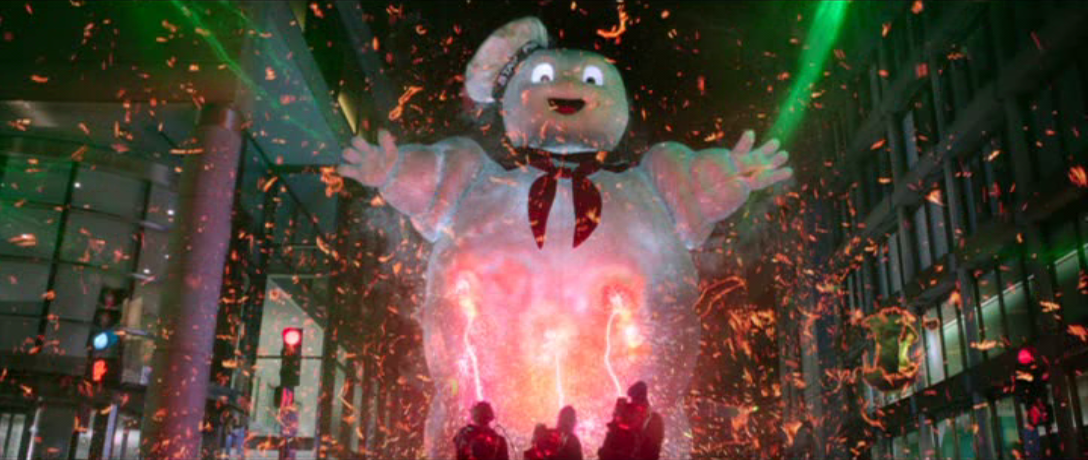
Speaking of far superior productions, Ghostbusters ’16 can’t seem to stop itself from referencing the original films. I’m not referring to the general concept or the ghost-busting equipment or anything like that; I’m referring to specific lines and callbacks that only serve to remind the audience that they’re watching a notably lesser shadow of those movies instead of the real thing.
In the original film, Janine answered the phone by saying, “Ghostbusters, what do you want?” because that’s who she was and what she would say when she was in that particular mood. Here, Chris Hemsworth’s character says it on an answering machine because it’s a line from the other movie.
In the original film, the Ghostbusters rant to the mayor and his staff, getting louder and more desperate as they appeal to him to cooperate. Each character delivers a dire warning of what to expect if Gozer isn’t stopped, culminating in Peter floundering with, “Human sacrifice. Dogs and cats living together. Mass hysteria!” It was true to his character, the context, and the building rhythm and tension of the scene. Here, two characters say “mass hysteria” to each other because it’s a line from the other movie.
In the original film, Egon uses a Twinkie as a relatable metaphor so that Ray and Winston can understand the amount of psychokinetic energy in the New York area. In Ghostbusters ’16, a billboard says “That’s a big Twinkie,” because it’s a line from the other movie. And which also makes no sense in this new context because “big Twinkies” don’t exist. They’re all the same size.
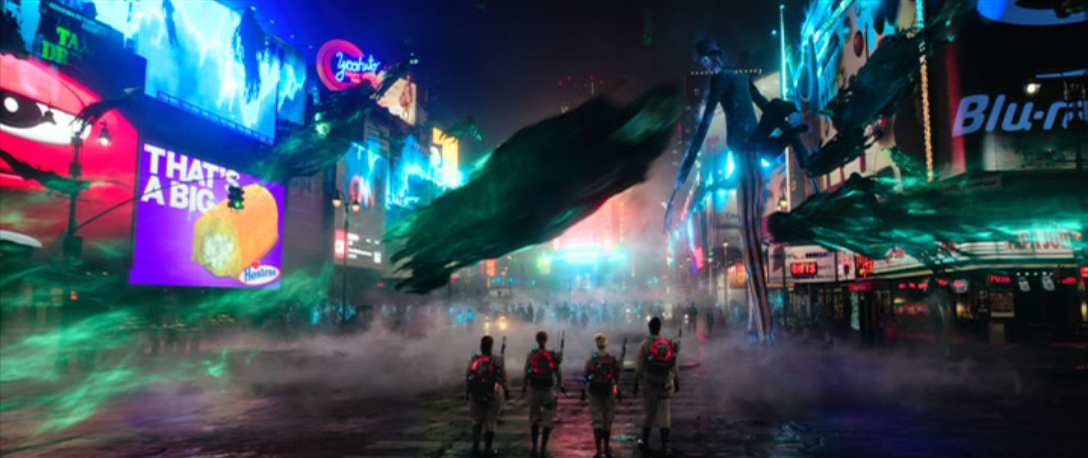
That already seems like a lot of unnecessary callbacks, stripped of their humor and appeal because they’re used in a way that shows no regard for what made them funny in the first place, but there are at least a dozen more throughout Ghostbusters ’16, none of them funnier than these. And that’s without counting all of the cameos.
So, hey! Let’s talk about the cameos.
The cameos are pointless but, like the callbacks, they at least remind us that if we ever feel compelled to watch this horse shit again, we can pop in a much better movie instead.
All of the main actors from the first two films return in some capacity, barring Rick Moranis, who retired from acting almost 20 years earlier. Annie Potts plays a receptionist again, because, hey, girl power, right? Sigourney Weaver plays Holtzmann’s mentor. Ernie Hudson plays Patty’s uncle. Dan Aykroyd plays a cab driver. They all get about as much to do as the bust of Harold Ramis, which sits in a hallway.
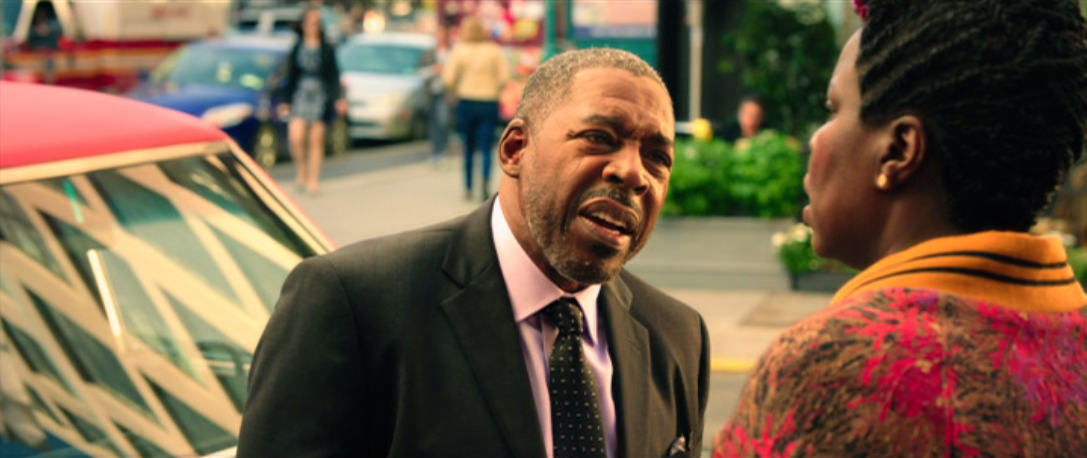
The only cameo that gets any room to stretch his legs is Bill Murray, appearing in a whopping two scenes.
Murray is probably the highlight of the film, and even he couldn’t make me laugh. He plays Dr. Martin Heiss, “a famed debunker of the paranormal.” He says “hell no” on a news broadcast and if you bother paying Bill Murray to appear in your movie and deliver a joke, it really should be something better than that.
Later he shows up at the Ghostbusters’ office and asks to see the ghost they caught. Fair enough. This makes sense within the context of the film and in terms of what little we know about their characters. (That is to say, their jobs.) Against the extreme cautioning of her colleagues, Erin releases the ghost from the trap, and it immediately murders Dr. Heiss.
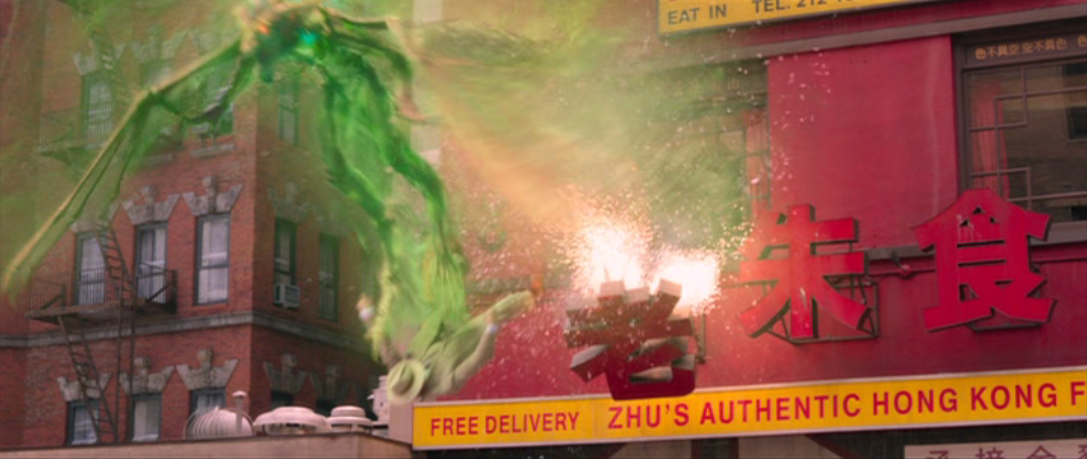
Funny shit!
But, whatever, who cares. Bill Murray got paid to sit on a chair and a stuntman got paid to fall out of a window. What makes this moment interesting, though, is the instructive contrast it offers to the original films.
Because, y’know, the first group of Ghostbusters didn’t go around killing people.
Granted, yes, it’s accidental. But it’s an accident born of gross negligence. The ghost they release is one that took them an extremely long time to capture. (I know. I watched the scene and it felt like an eternity.) It was difficult. Trapping it came only after a lot of damage was caused and one of their teammates was even held in its claws.
Dr. Heiss is in his mid-60s, at least. He walks with a cane. He’s so frail he can’t even stand up for extended periods. And when Erin releases the ghost, she knowingly and deliberately does so when the rest of her team isn’t ready. To be clear: Erin unleashes a powerful ghost on an elderly man, actively preventing anyone from being prepared to handle it.
This is murder. Or, I guess, manslaughter. Either way, it’s homicide.
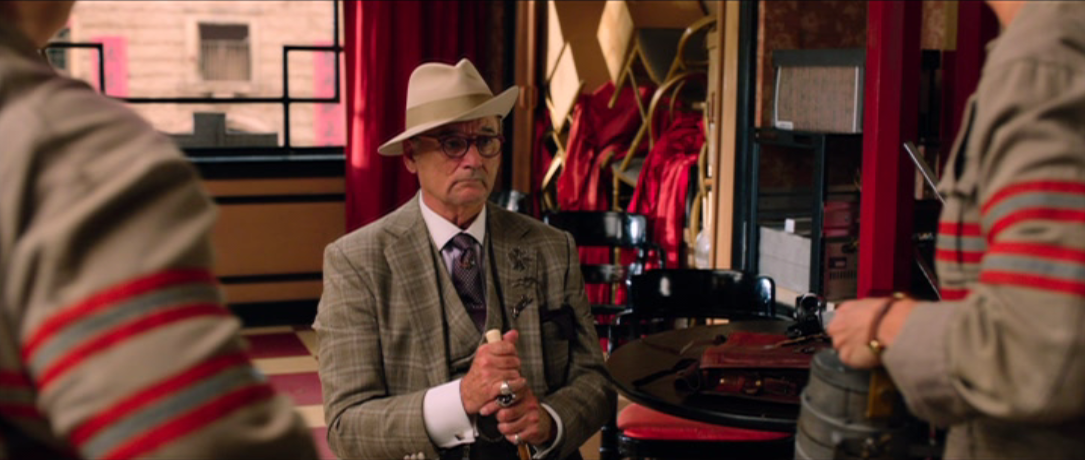
This is William S. Burroughs killing his wife while drunkenly trying to shoot an apple off her head. No, the intention in either case was not to harm anybody. But, in both cases, the setup was willfully constructed in a way that death is as good as a given.
Dr. Heiss is killed by the ghost and his corpse is ejected from the building. (Or he dies from the fall after being shoved out by the ghost. It’s academic at this point.) The ghost flies away to kill dozens or hundreds more people and nobody even tries chasing it.
The police come and the Ghostbusters are questioned. This isn’t very productive, because the Ghostbusters can hardly speak. They are overcome with remorse. Erin can’t believe her grandstanding directly led to the death of an innocent man.
The rest of the Ghostbusters start to question the wisdom of what they’re doing. Don’t they exist to help and protect people? Aren’t they now responsible for taking a life? If they didn’t exist, Dr. Heiss would still be alive. How many others will die as they bumble around the city with barely tested equipment? The Ghostbusters are speechless.
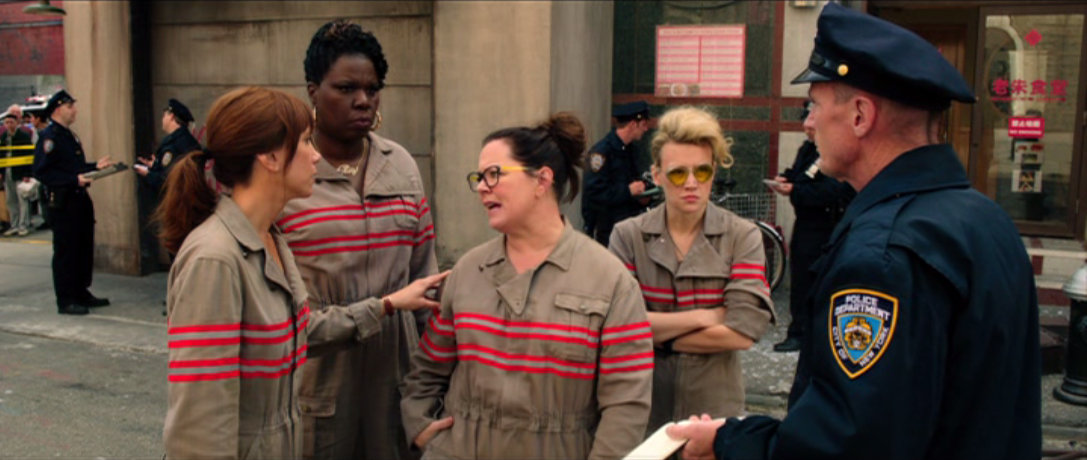
Oh, whoops, no, this is the part where they list Patrick Swayze movies to each other. Fuck the dead guy, right?
Compare this to the scene in which the original batch of Ghostbusters almost shoot the maid in the first film. An important distinction is the fact that what they do is totally accidental. Nobody, for instance, is trying to prove to the maid that the proton pack is real. They simply get spooked and fire at her cart.
They’re sorry. In fact, all three of them apologize. They take a moment to calm down. That was a close one. They’re here to catch a ghost, but they can’t let that get to them. If they do, as they’ve just learned, they are endangering the lives of the staff and guests. As a direct response to this moment, they change their tactics and split up. Why? Because they’d prefer not to murder innocent people.
How does the new team stack up? Well, in response to directly causing the death of an innocent man, they recite Swayze’s IMDB page.
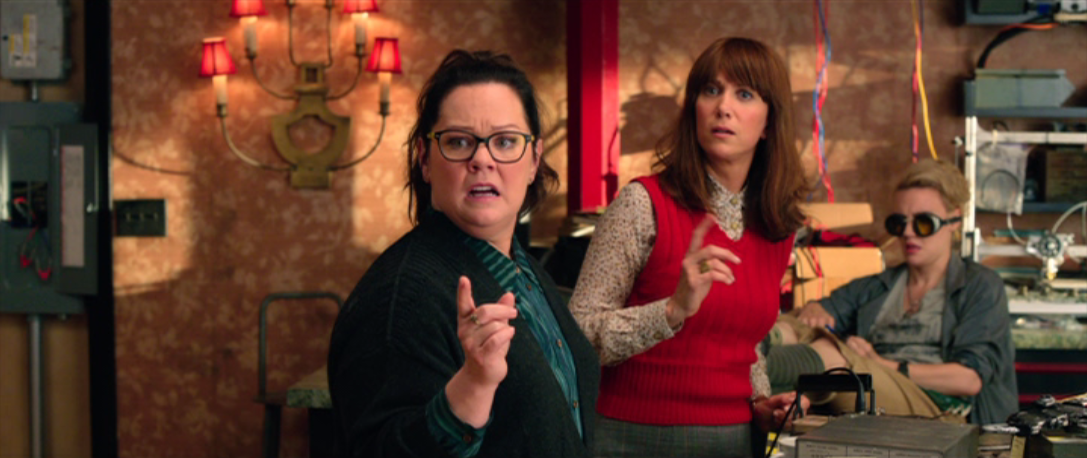
Can callous response to death be funny? Of course. But is that part of who these characters are, or is it just another example of Feig (and his cowriter Katie Dippold) cramming in jokes for the sake of having them without regard for where they are in the film, what they mean, or what they’ll say about the characters?
Of course, that’s a rhetorical question. No thought is given to the characters elsewhere in the film, and Feig sure as hell isn’t about to start now.
I’m blaming Feig, but I can’t say for sure that it’s his fault. At the very least, though, he’s guilty for not reining his actors in, and not letting them know that every scene can’t play like it stars a gaggle of honking geese.
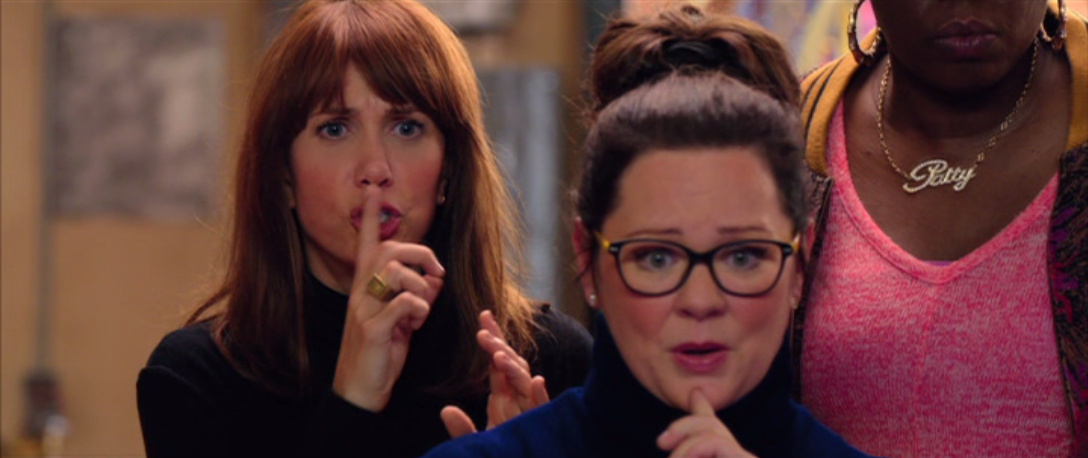
These characters never shut up. They’re exaggerated. They think going big is the only way to get a laugh, despite the fact that the previous two films rarely resorted to that. They think acting like cartoon characters — all bug-eyes and gesticulations and shouts — is the best way to sell the material, when all it does is make the movie even more tiresome.
This even affects the supporting characters, who each have their own unnecessary quirks and punchlines, further undercutting any sense of reality Ghostbusters ’16 could have possibly established.
Remember the librarian in the first film? Her equivalent here shits himself and tells jokes about animal enslavement and the repression of New York’s early Irish. Remember the hotel manager trying to keep his guests from knowing what the Ghostbusters were doing in the first film? Remember the way we’d cut from the Ghostbusters wrecking the ballroom to him in a state of escalating panic? His equivalent here has a high-pitched scream, which is not quite as worth cutting away to, in my humble opinion, and which says nothing about who he is, his role in the film, or anything that’s actually happening.
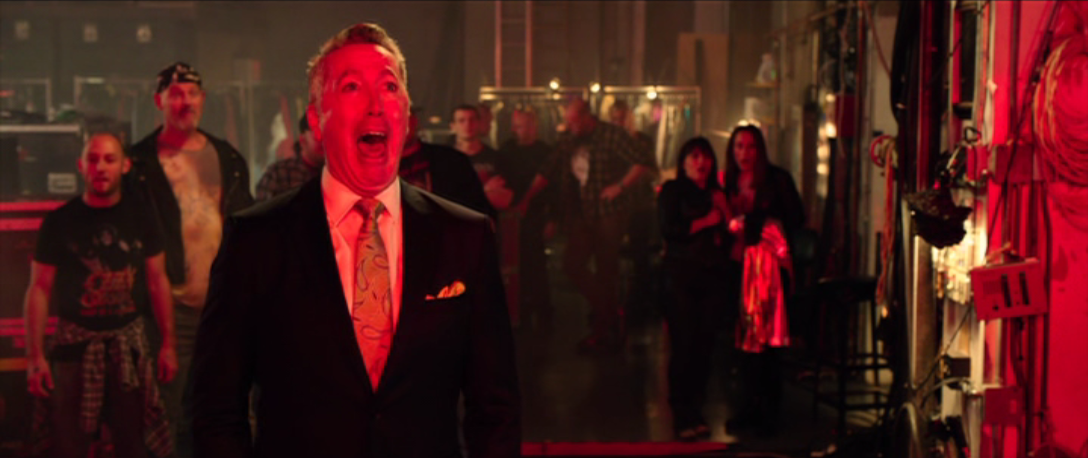
What Ghostbusters ’16 does best is shine a light on why the original film wouldn’t have worked as well with any other approach. If the first film takes itself seriously, this one refuses to. If the first film had strong characterization, this one relies entirely on gags to keep things moving. If the first film took place against a recognizable, realistic version of New York City, this one takes place in Wacky Land, where every character, no matter how minor, gets a chance to tell a few jokes and make funny faces and remind you that you’re watching a gigantic heap of shit.
It also proves, time and again, that the reason Ghostbusters ’16 fails has nothing to do with the gender of its stars; it fails because of its basic comic philosophy. (This obviously does not excuse those who wrote it off the moment they heard about the film, of course. Their apoplexy has and had nothing to do with the actual quality of the film.)
When Erin meets up with Abby and Holtzmann the first time, they make her listen to a recording of a fart. (“Is it more or less disgusting if I tell you it came from the front?” asks Holtzmann, and it’s a perfect opportunity to eject the disc before wasting another hour and a half of your day.) This is an early, establishing joke. This occurs while the film is still telling the audience what to expect. This is the foundation upon which the rest of the film will build.
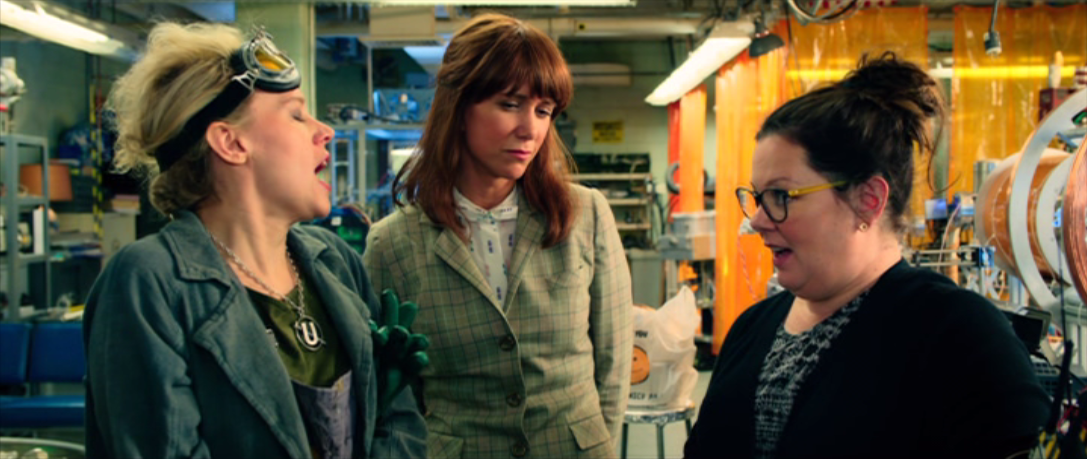
Now please list for me every time the first two movies resorted to a fart joke.
Boy, that was easy, huh?
Would the original films have been improved by the addition of fart jokes? This movie sees the Ghostbusters shooting a big ghost in his genitals. Would the original film have been improved if those Ghostbusters stood around slugging the Marshmallow Man in the balls? This movie sees Erin complaining that slime got inside “every crack.” Would the original film have been improved if Peter told Ray that slime got in his dick hole?
It’s nothing to do with gender. It’s everything to do with the original film being intelligently crafted at all levels, and this one positively leaping for the cheapest, easiest laugh at every juncture.
I will give it credit for one thing, though: it brushes up against a genuinely interesting villain.
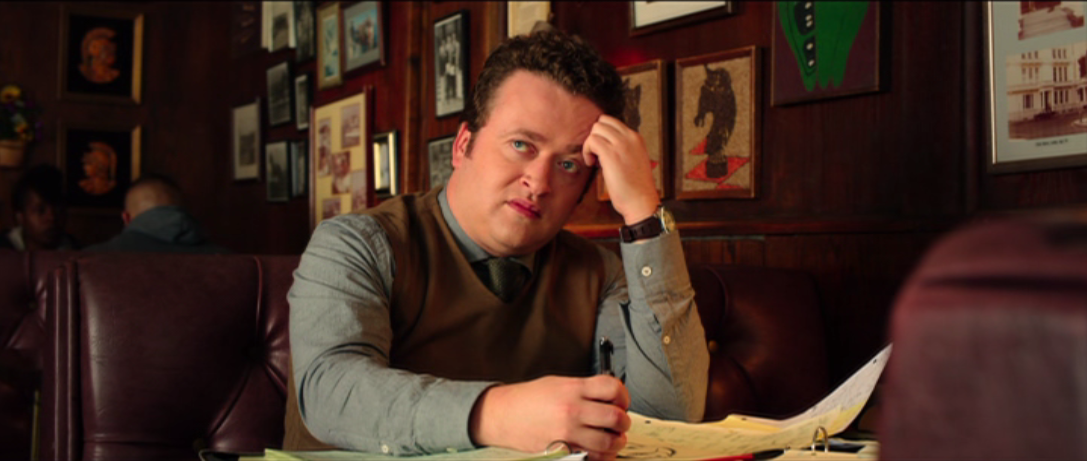
The first film’s Gozer had a plan I still, to this day, don’t entirely understand. It was a force of evil, though, and that’s all we had to know in order to enjoy the movie. The second film’s Vigo was far clearer about his intentions, but when all is said and done he doesn’t amount to much more than a guy in a haunted painting. If there’s anywhere a film can easily improve on the originals, it’s here.
And, hey, maybe Ghostbusters ’16 does. It could do a hell of a lot better, but I actually mean that as a compliment, because there’s so much here that could have worked perfectly.
Our villain is Rowan, a misfit who we see get both mistreated and outright bullied throughout the course of the film. It’s important that we see this, I think, because it helps us to understand where he’s coming from as he plots revenge. I don’t think we’re ever truly aligned with his perspective, which is fine, but we at least understand that he’s not doing bad things simply because we need a bad guy.
Rowan is an outcast. He’s emotionally damaged. He doesn’t want to be treated poorly, and yet he is indeed treated poorly. Constantly. By nearly everyone.
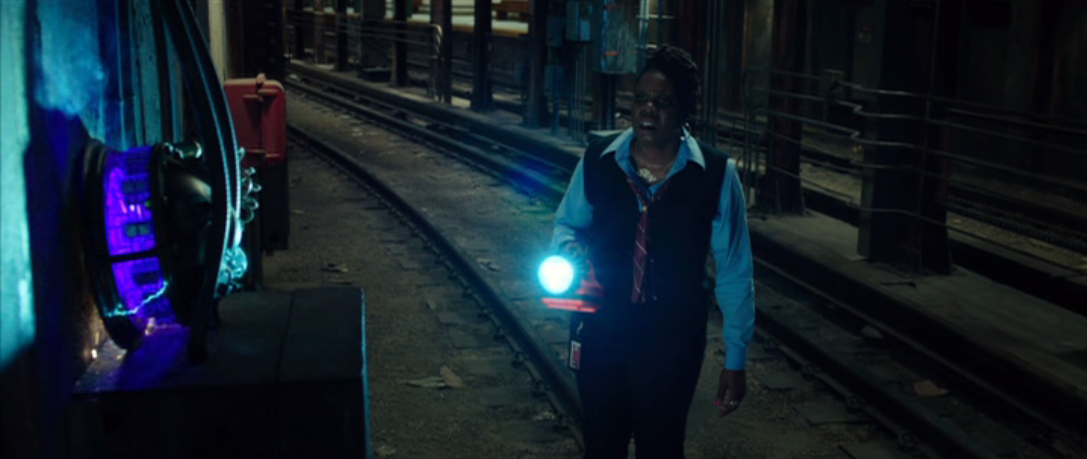
His plot involves activating ley lines throughout New York City. Why? Well, toward the end of the movie we see that the city has somehow been sucked back in time, or something? I don’t know; that doesn’t seem to follow logically from anything else, so I can’t say much about it. Does Rowan think New York was nicer back then? He’d fit in better back then? It’s never clear and I don’t know how this resolves his concerns with being bullied any more than I know why the past version of New York seems to differ only in terms of what the billboards are advertising, but let’s get back on track.
Rowan is releasing these ghosts as a sort of general punishment for the city that mocks and ridicules him. Okay. Then at one point, he kills himself and becomes a ghost. Within the reality of the film, fine. We never understood the mechanics of his devices or what they were truly capable of, so if the big machine in the basement turns him into a ghost, I’m okay with that.
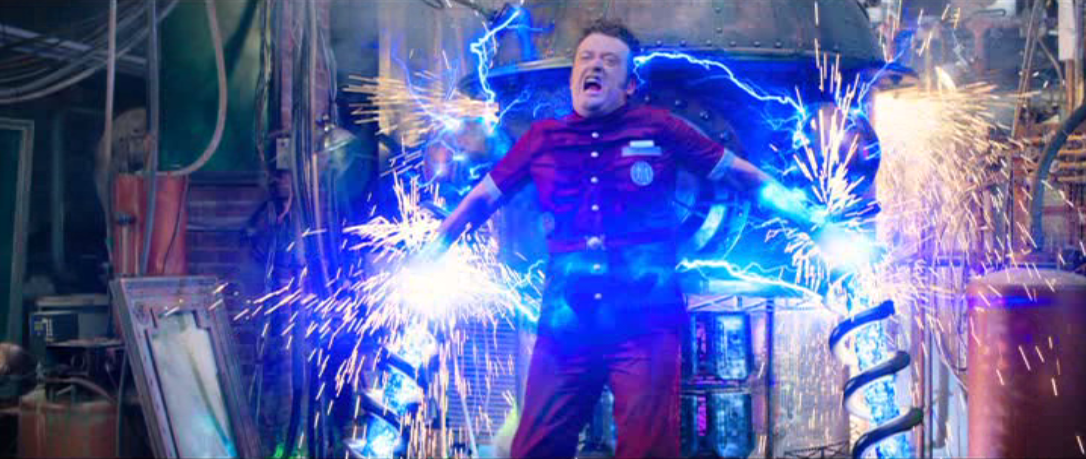
Here’s where things get interesting: Rowan possesses Kevin, the Ghostbusters’ hunky, braindead receptionist.
Immediately, people start treating Rowan differently. He’s no longer unwelcome. Men joke with him as opposed to teasing him. Women notice him. His experience of being alive is entirely different not because he’s a different person, but because he looks different. Rowan even says to himself during this experience, “I definitely should have worked out more.”
Possessing Kevin seems to be teaching him something about his own role in the miserable existence he led. No, he couldn’t have snapped his fingers and looked like Chris Hemsworth, but maybe if he’d exercised a bit. Maybe if he saw a therapist who helped him through his hangups. Maybe if he surrounded himself with supportive friends and found a collection of people who would treat him better.
Instead of spending his time plotting revenge, he could have taken any step at all toward bettering himself.

I realize I’m getting dangerously close to victim blaming here, and I don’t intend to do that. I do intend to point out that within this specific movie, this specific character experiences life in another body and finds it more pleasant, happier, and more fulfilling by a factor of thousands.
It seems as though we’re building toward some kind of awakening. Perhaps Rowan would realize that his behavior, his mindset, his slovenly appearance contributed to his own mistreatment. He was mistreating himself, after all, both physically and emotionally…all the rest of the city did was join in. Maybe he feels remorseful after it’s too late, after he’s already released the contents of Hell itself into New York. Maybe he helps the Ghostbusters stop the ghosts, since he’s “crossed over” and can do things that they can’t. There is (forgive this) the ghost of a great idea there.
But no. That entire theme is abandoned, just like Rowan tosses Kevin’s body aside. That’s it. We establish an interesting idea that seems like it’s on the verge of saying something…and then we ditch it.
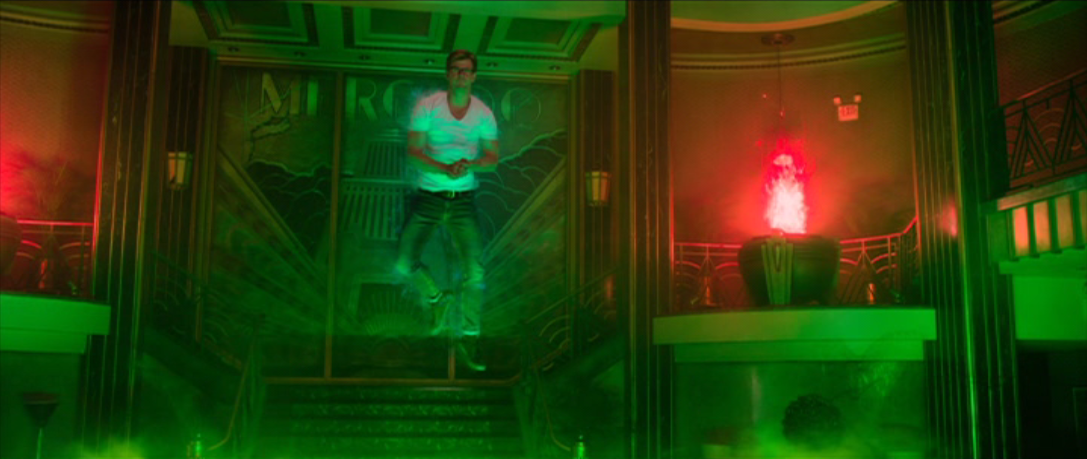
Rowan could have been and should have been the best thing about the film. Maybe he still is. But if I ever think about the character in the future, it won’t be anything I actually saw on the screen.
Hemsworth as Kevin is probably the worst thing about the film. The joke is that he’s stupid, I guess, in combination with being good looking. That’s fine, but his stupidity borders on retardation. He’s confused by telephones, speaks nonsensically, doesn’t know where he works or what the Ghostbusters do, and keeps drinking coffee and spitting it out all over himself because he doesn’t like it. The guy isn’t dumb; he’s brain damaged.
I’ve seen people suggest that this is some kind of subversive comment on the way women are often objectified in film and on television. They’re dumb but pretty, I suppose is their point. But I think that’s either a reach, or Feig massively bungled the execution.
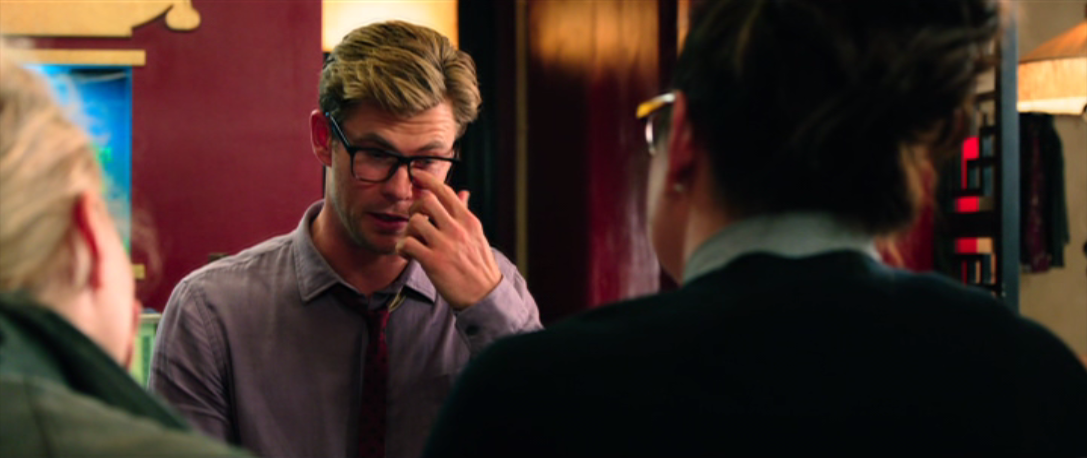
For starters, having a male character be good looking and stupid isn’t subversive at all. We’ve seen good looking male dopes in media as long as media has been around. Just thinking of relatively recent examples, Zapp Brannigan, GOB Bluth, and John Hamm’s character on 30 Rock. I’m sure you can think of reams more. “Stupid” is the default comic character trait; people misunderstanding things is funny, so our comedies are populated with complete fucking imbeciles. Many of them are good looking, because they’re stars. A number of them are women. A number of them are men. To believe that your stupid male character comments on the trope in a way that every other stupid male character fails to is a pretty pompous mindset.
Where it mainly falls down here, though, is the fact that Ghostbusters never did that. What, exactly, are you undercutting? All that appalling sexualization of Janine?
You have every right to find Annie Potts attractive. (Annie, call me.) In the second film, I would definitely say she’s at least cute. But she’s never portrayed as dumb, and certainly is not portrayed as eye candy. She flirts a bit with Egon in the first film and gets ignored, and there’s an off-camera makeout session with Louis in the second film.
That’s it. Because she’s a character. She gets to be Janine Melnitz. She has so much to do and say that she never gets around to bending over desks and pressing her breasts together.
I’m being completely honest here. If anybody can truly make an argument for Janine being sexualized (inappropriately or otherwise), I’d love to hear it.
Nor is Dana sexualized. Zuul is, and it’s Dana’s body that Zuul possesses, but even that is scarier than it is sexy. Zuul grumbles and growls and levitates to keep the scene in which she tries to seduce Peter from being sexy at all.
And the actual Dana is portrayed in an even less sexy way. She’s lonely. She avoids human contact. She dresses in unflattering, frumpy ways with an emphasis on sweatclothes. She subsists on junk food. (“You actually eat this stuff?” asks an appalled Peter.) She’s also not in any sense of the word portrayed as an idiot. She’s cultured, she’s an accomplished classical musician, and she sees almost immediately through Peter’s posturing bullshit.
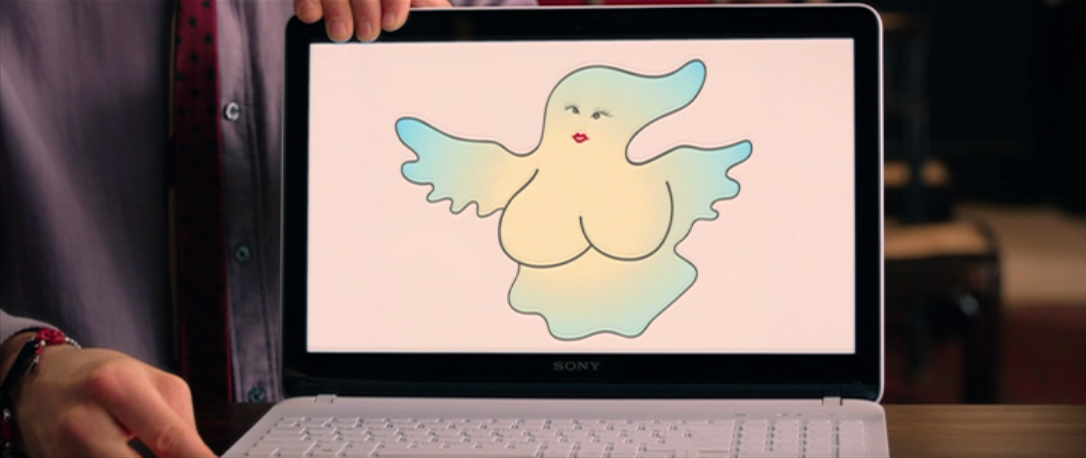
What is even remotely problematic in the original films? Where are the hypersexualized bimbos Ghostbusters ’16 feels obligated to undercut? If that’s the kind of comment it would like to make, it’s making it under the wrong banner. Remake an Adam Sandler movie, or something.
For a film crammed with toilet jokes, cheap gags, pop culture references, a complete disregard for narrative or characterization, jokes that were never funny to begin with being dragged out far longer than they should be, and, yes, active objectification of its own, Ghostbusters ’16 really has no right to try to “intelligently” comment on the medium as a whole.
I could go on. Shit, I haven’t even mentioned Lady Slimer.
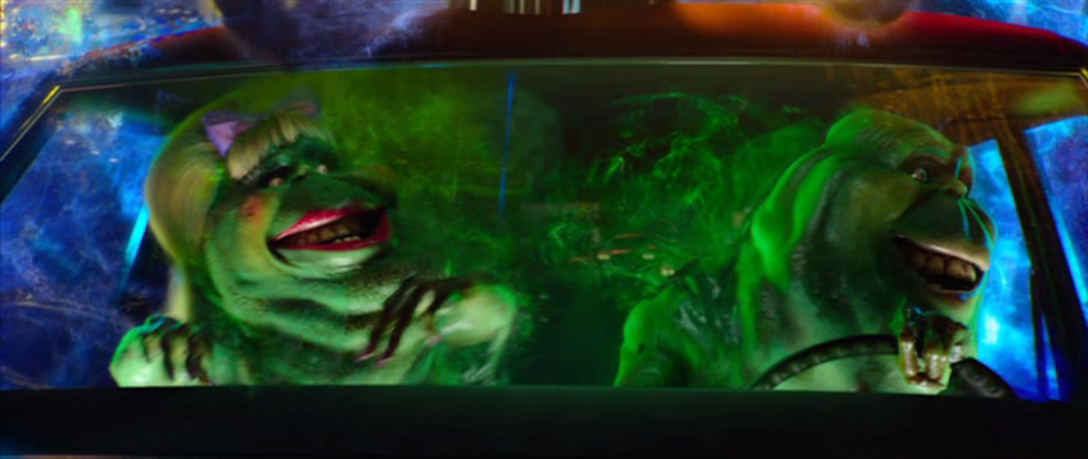
So hey, let’s talk about Lady Slimer. Doesn’t it seem strangely counterproductive for a film interested in smashing gender barriers to create a female character by sticking a bow and some lipstick on an existing male one? Boy, it’s almost like this movie doesn’t know what the fuck it’s doing.
When the initial backlash to Ghostbusters ’16 hit, Paul Feig said that people should wait and see it before passing judgment. That’s a fair perspective, of course. The suggestion was that it might be a much better movie than people suspected. Folks could sit around behind their keyboards and mock it, or they could head to the movies one weekend and find themselves pleasantly surprised.
But then the movie actually came out.
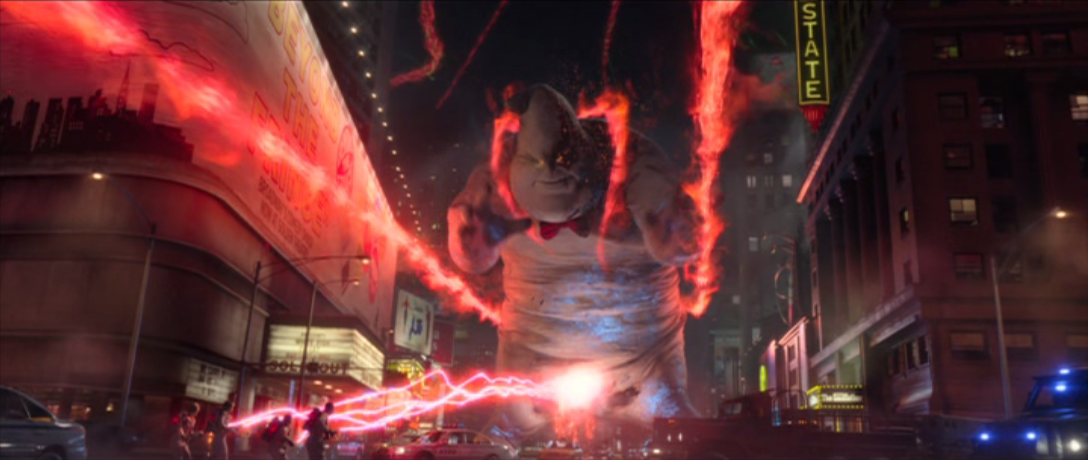
It well and truly sucked. And I hope my 8,000-word complaint proves that the extensive problems this movie has have nothing to do with anybody’s gender.
“Wait and see” was the correct way to shut up the detractors. Unfortunately, releasing a shitty movie was also the correct way to shut up the defenders.
People don’t speak much about Ghostbusters ’16 anymore. Compared to the original movie — which had at least a decade of profound pop-culture resonance, and arguably still resonates — this one barely merits a footnote.
I’m sure there are many people who enjoy it. (It received a number of positive reviews, at the very least.) I’m happy for them. But there are people who enjoy all kinds of bad movies. And, culturally, Ghostbusters ’16 has failed to catch much momentum. Those who do enjoy it must enjoy it quietly, because while I still see people bitching about it, I no longer see anybody coming to its defense.
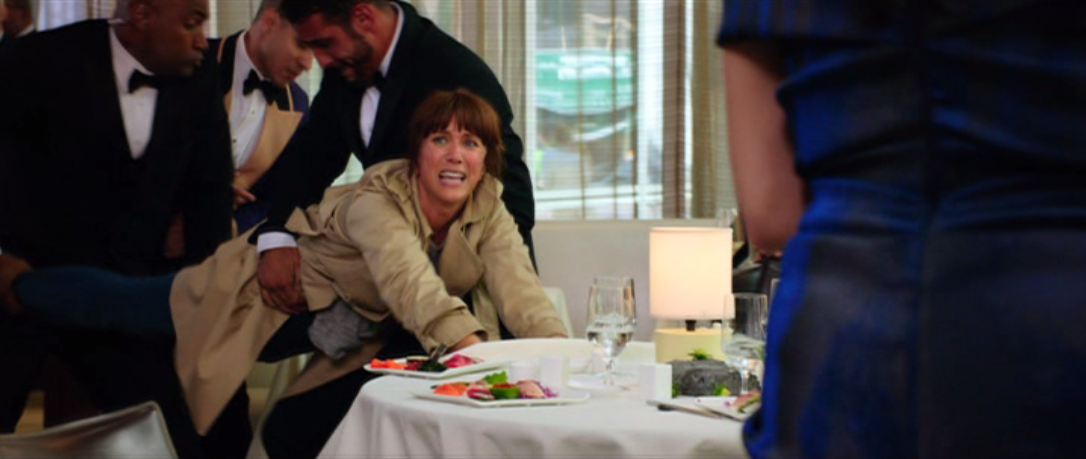
Ghostbusters ’16 was intended to revitalize the franchise. And it could have. It could have even done so with exactly same actors we have here. But just as the characters are interchangeable, so is the film. For such a unique and beloved concept, this version of Ghostbusters is indistinguishable from any other brainless comedy that’s been released in the past 30 years.
It doesn’t know what it’s doing, it doesn’t know what it wants to be, and it doesn’t know what should set it apart. The first Ghostbusters was the perfect storm of every aspect working correctly and in tandem with each other. Ghostbusters ’16 is its perverse opposite. It’s a version of the film that crossed over from a universe in which nobody cared about making it any good.
Girl power, yes, fine, of course. Female artists across all forms of media have done incredible work throughout the course of creative history. Literally nobody with more than half a brain would ever argue otherwise. Hold up almost anything other than this soulless garbage if you feel the need to prove it.
Little girls deserve the kinds of movies little boys are given all the time, and by that I mean they deserve good ones. Ones that know what they’re doing. Ones that are genuinely, for any number of reasons, worth watching.
Age and gender aside, we all deserved better than Ghostbusters ’16.

